
The roads winding through the countryside, some tree-sheltered and some opening onto wide rolling fields belie how close we are to London and the grey January concrete I've just left behind.
Although the weather is downcast and gloomy, the skies heavy with cloud and light drizzle, the journey out of my corner of South East London quickly and always surprisingly opens out into fresh air and the wide landcapes of West, then East Sussex.
Most of the fields I pass are brown, the work happening underground. The quiet surface appears asleep with no visible sign of life. Most of the winter produce is cropped now and all that remains is either stumpy and scrubby or muddy and lumpy.


I wonder if this is the best time to visit a fruit farm. But I wanted to see where the work of growing began. Normally all you see in your fruit bowl is the gloriously ephemeral end result. You give it little thought as the juice from the berries runs down your arm and chin, but here, on a cold and muddy morning, you can see the long journey from it's soily and unglamorous beginnings.
Brambletye biodynamic fruit farm near the small town of Forest Row, is down a long and bumpy road that after a few twists and turns becomes little more than two muddy ruts. I drove past the ruins of the 17th century Brambletye manor, of which there are only separated halves of the facade remaining, and knocked on the door of what I took to be the farm house. Two large dogs (I'm not good with breed names) galloped around me, and the lady of the house, aproned and with flour covered hands like the country version of a seaside postcard told me I was in the wrong place. A great shame, as the smells from the kitchen wafted out the door like siren song.
A few minutes later and slightly further along the road, I stepped from the car into the mud of the farm then got immediately back in and changed out of my towny white trainers into wellies.
Greeting me were Ellie and her two year old daughter who was well wrapped up with a wooly hat pulled down over her ears, and coat and scarf drawn up around her, but not quite able to prevent a little cold red nose poking out.
Crates of bottled apple juice were stacked high all around ready to be sent out, and the big barn behind was being swept out by Stein Leenders, clad in dark blue overalls and dusty boots. He and Ellie have been farming on this land for 10 years now after he moved over from Holland along with 15,000 apple trees to what was then a rented field.
The first thing Ellie took me to see were the mushrooms, growing in an old shipping container. Rows of plastic barrel-like sacks, packed tightly with mushroom spores and wood chippings from the hazel trees in the neighbouring woods were sat neatly on shelves. The damp air and low hum of the artificial lights casting a Bladerunner like glow gave the impression of a strange tunnel, lined with embryonic alien life. Here and there, out of the plastic where holes had appeared, sprouted little mushrooms. Pink, yellow, and blue winter oyster mushrooms were vivid in the half-light, slowly growing larger until harvesting. Growing this way recreates the exact conditions all year round as if they were growing in the forest. This was very different to the mushroom farm's long stacked beds I spent weekend mornings picking in as a teenager to earn money to buy the latest A-ha album.
A few minutes walk from the mushrooms and we were on the crest of a hill, the highest point of the farm overlooking the sweeping High Weald. Rows of stunted apple trees, Evita, Santana and Red Topaz varieties, lined the field, sounding like a musical revue. Leafless and jagged, it seemed as if a fierce wind had blown through, stripping everything. On this exposed hillside, it probably had.
Chickens, lots of them, run freely and curiously among the slim tree trunks, the grass growing happily under their feet. "You don't see this very often," says Ellie, picking up her daughter, who was starting to get cold and a little hungry, as was I. She tells me the chickens are owned by a neighbouring farmer and share, and therefore fertilise, the land. We walk along to their coop, a long, movable shed where in the porch-like entrance is a window through which a conveyor belt's end pokes through. One egg sits proudly on it.
Behind this, through another door is the main room where the chickens can sleep, lay eggs and hang out, possibly watching telly, or whatever it is chickens do on their days off. Fifteen or so are clucking around happily and when we step out the door we are greeted by a large crowd of them, gathered like fans at the stage door of the Palladium.
We head back toward the main apple shed, past rows of gooseberry bushes, the green and the sweeter purple types. Past cherry trees, blackberry bushes and then the pear trees, of which there are a few varieties such as Wildeman and Concorde. Every tenth pear tree is a pollinator, that is to say, a different variety. They are grafted onto quince roots and you can see the quince trying to fight it's way up through the soil around the base of the trees.
Red and blackcurrant bushes are being pruned and a few cabbages, kale, cavolo nero remain, the end of the season approaching. As spring arrives, so will 'the hungry gap', the space between the hardy winter root vegetables and brassicas growing and the fruit season starting. This is when the farm maintenance and planting happens.
The longer storing varieties of apples, held back for this lull -- some in low oxygen storage -- can be pressed for juice, ensuring a constant year round supply. Vats of cider vinegar are in the background too; the raw, unpasteurised stuff, full of good bacteria and culture, just like my French family. These are sold along with the juices, purées and fruit and veg at the farmers markets and shops the farm supply.
The apple pulp and waste gets fed to the two pigs, which, as it comes out of the pigs, feeds the land on which the apples grow, just like with the chickens eating the plants in the orchard.
It's an inspiring sight to see, and the work and dedication they put into their farm is uplifting in these strange times. I tentatively ask about what 'Brexit' may mean to them, and Ellie tells me they use mainly local pickers in season, and plenty of restaurants and suppliers have already been in touch to see what they can use on a local produce level. So perhaps, if there is anything good to come out of this whole farce, it may be that we become much more connected to the seasons and to shopping locally rather than relying on imports.
Ellie and Stein care about their farm, the land and their products and we as consumers should be grateful for such dedication. We are able to get real food grown with care and respect and not covered with 'Roundup' or picked before being ripe and cold-transported thousands of miles. Perhaps it's time we toned down our sense of entitlement to all year round asparagus and enjoyed things as they appear from the land before us. It certainly leaves a better taste in the mouth.
Brambletye Fruit Farm, East Sussex
London Farmers Markets
Orchard eggs

Switchel
Raw, unpasteurised cider vinegar, as produced on Brambletye farm has many supposed health benefits, not least I suppose because it's all natural. It's not just something to make a salad dressing or vin d'alho with, either. People have been drinking it for centuries. There are so many varieties, but if you taste proper vinegar you'll never go back. As well as apple, there are many raspberry vinegars, parsnip ones, red and white wine, obviously, Banyuls vinegar, which is like having a glass of port, aged vinegars, young ones, all kinds.
I use the cider vinegar to make 'switchel,' a centuries old drink that deserves a revival. It's refreshing and interesting and you can make it as sweet or sharp as you like. I prefer sharp to add some zing, there are already to many sweet drinks around. For a non-drinker it's something that tastes a little more grown up than the seemingly thoughtless offerings of children's fizzy squash packaged in adult designs and it's not based around sugar.
It's important to also use raw honey here to get the full healthiness.
Make a bottle, keep it in the fridge and swig merrily away, knowing it's all pure.
Ingredients
1tbsp raw honey
Juice and zest of a lime
4tbsp raw cider vinegar
A thumb of ginger, grated
Water to top up (or leave it neat and dilute with sparkling water)
Method
Dissolve the honey in a few tablespoons of hot water then top up with the lime juice, vinegar and grated ginger. Funnel into a 500ml sterilised glass bottle and add fresh, filtered water to the top. Seal and leave to infuse for a day.
Keep in the fridge, serve with ice or just straight in short glasses.

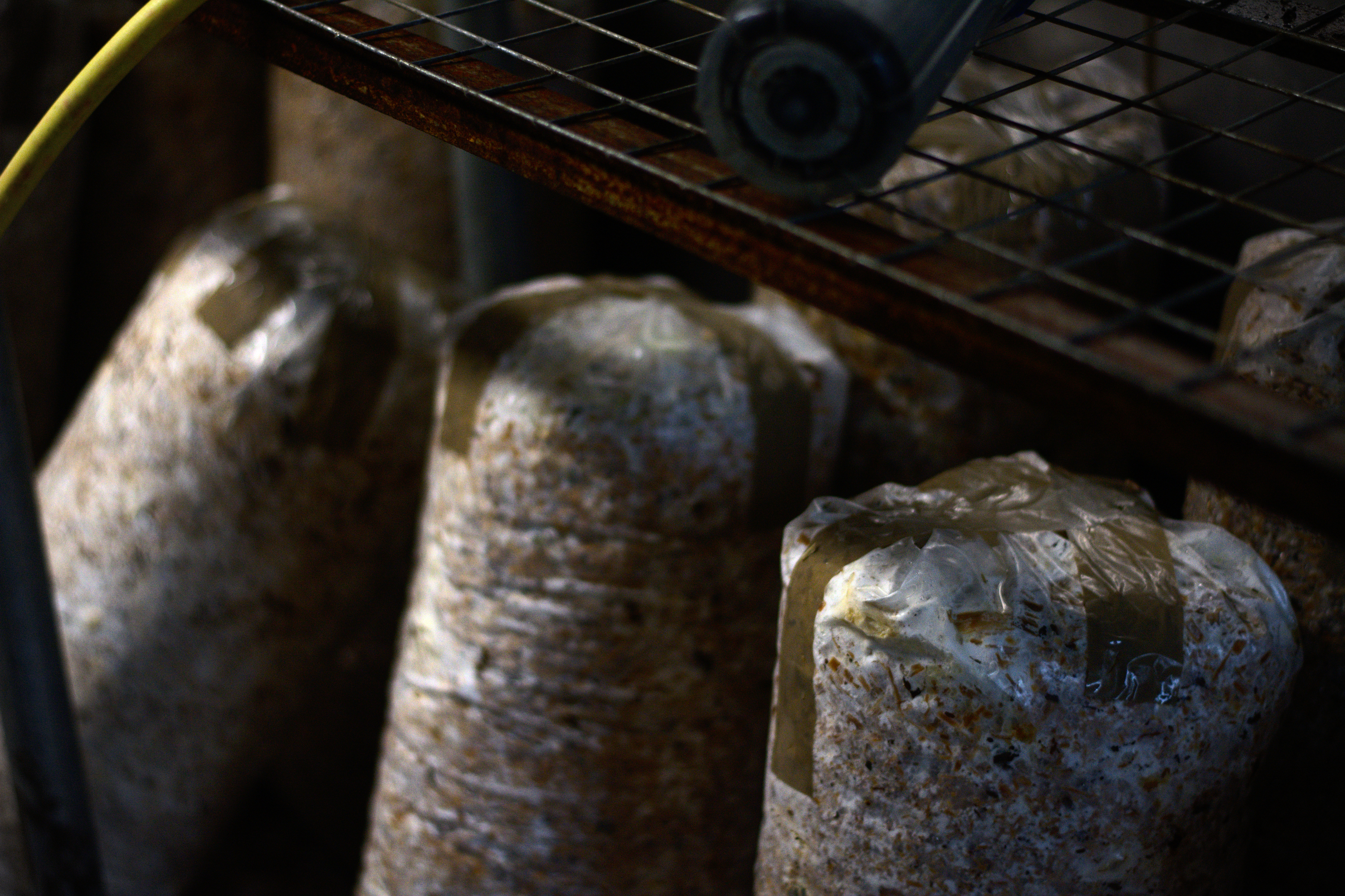
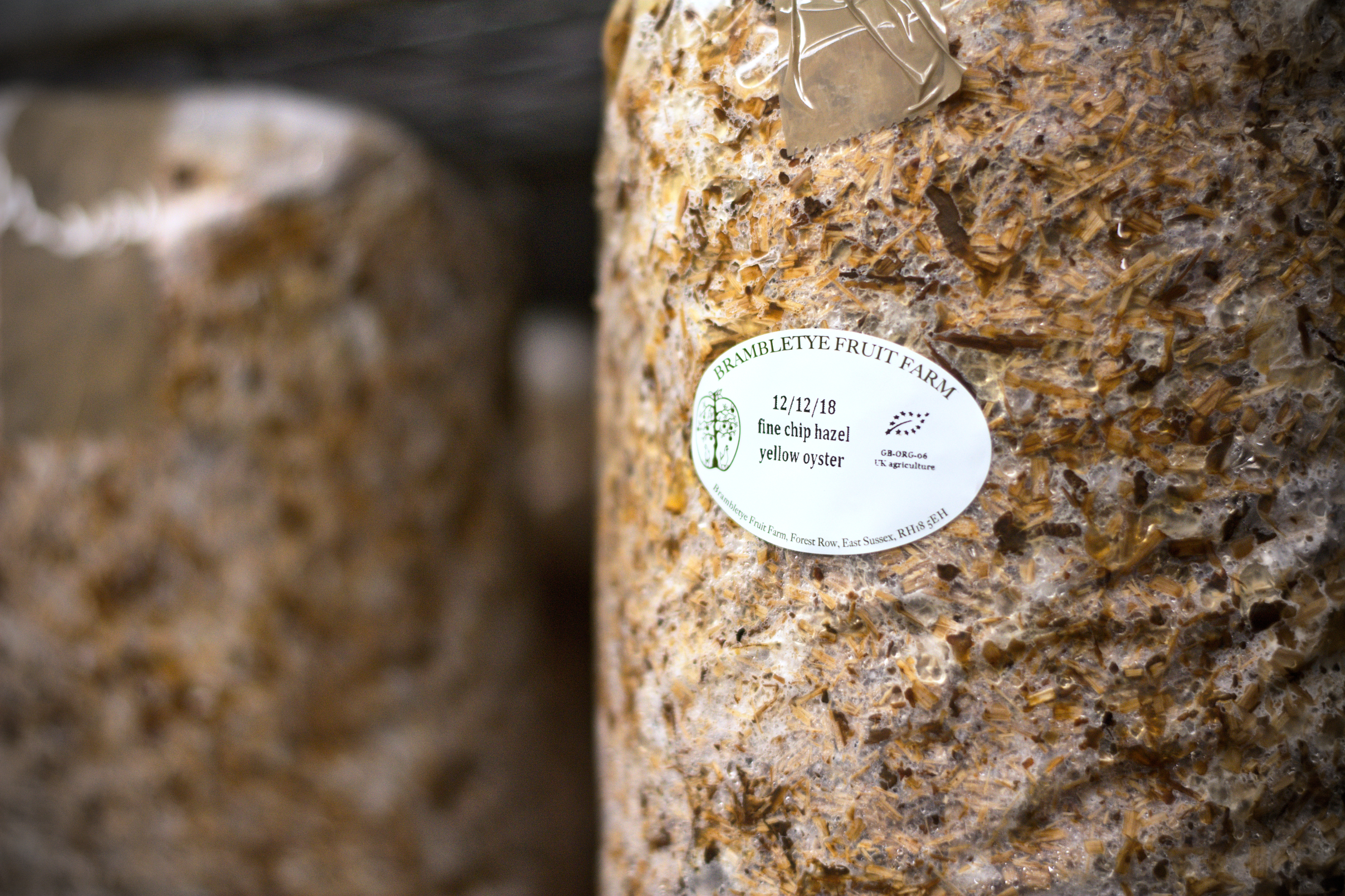
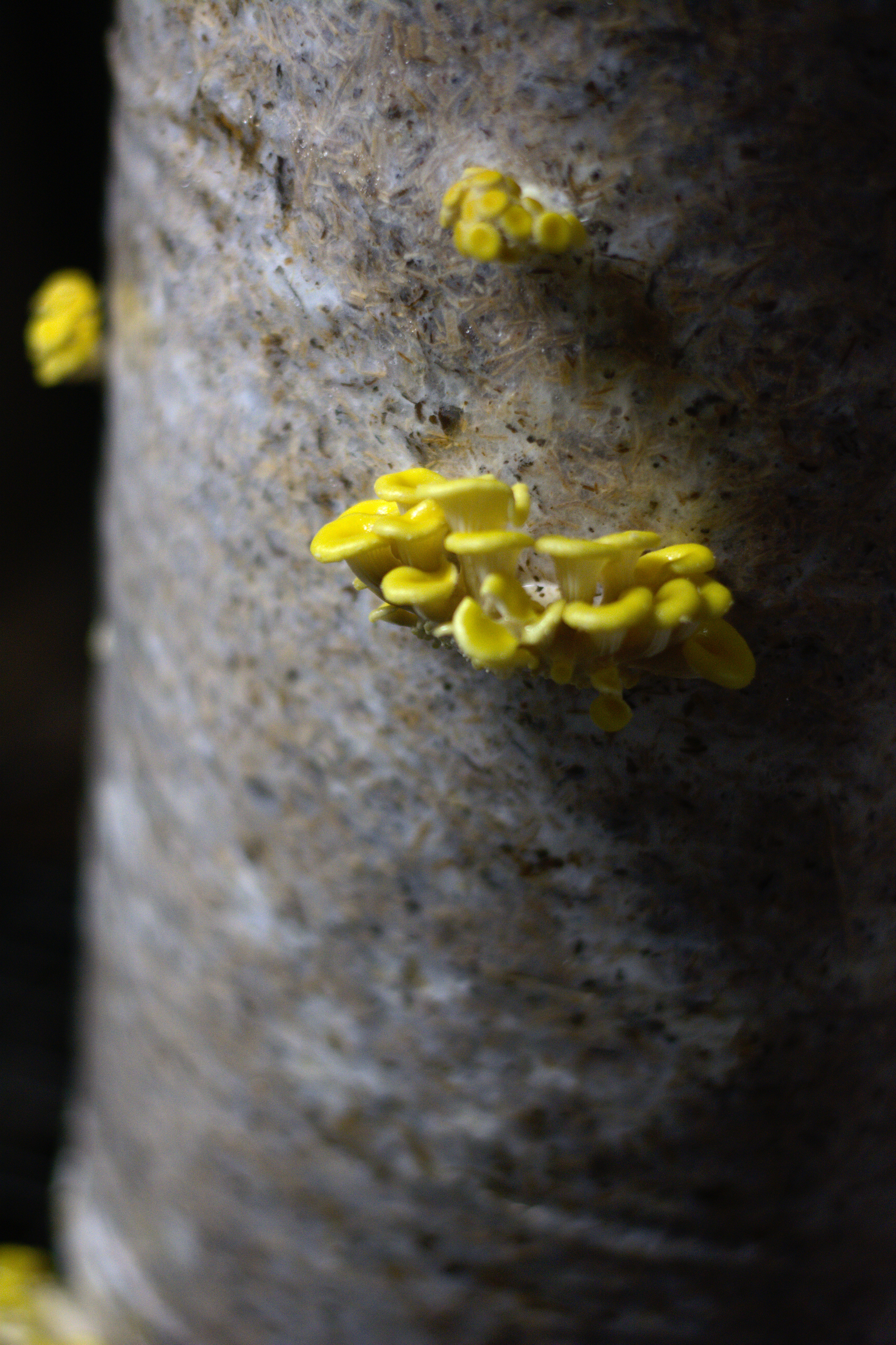
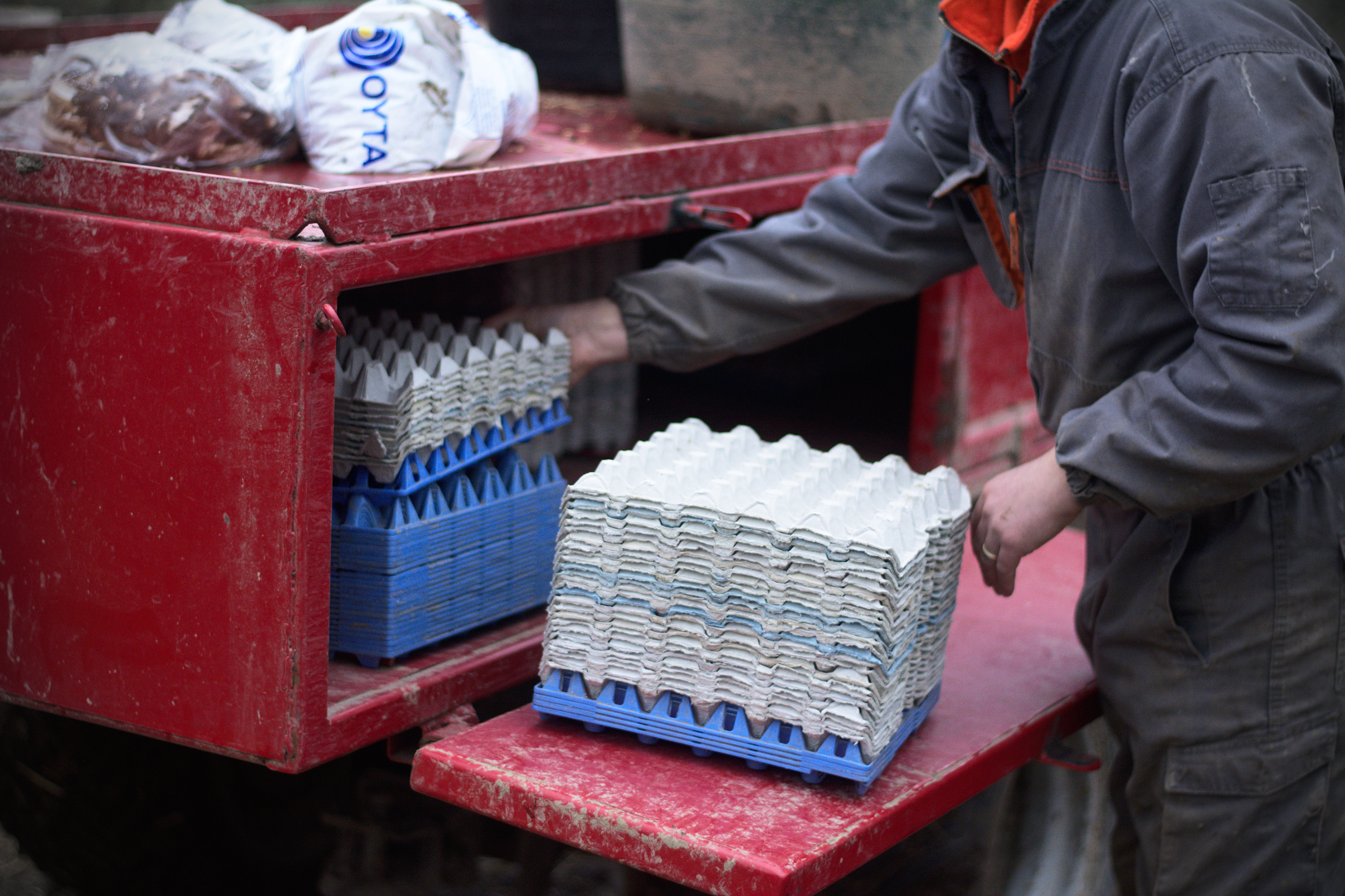
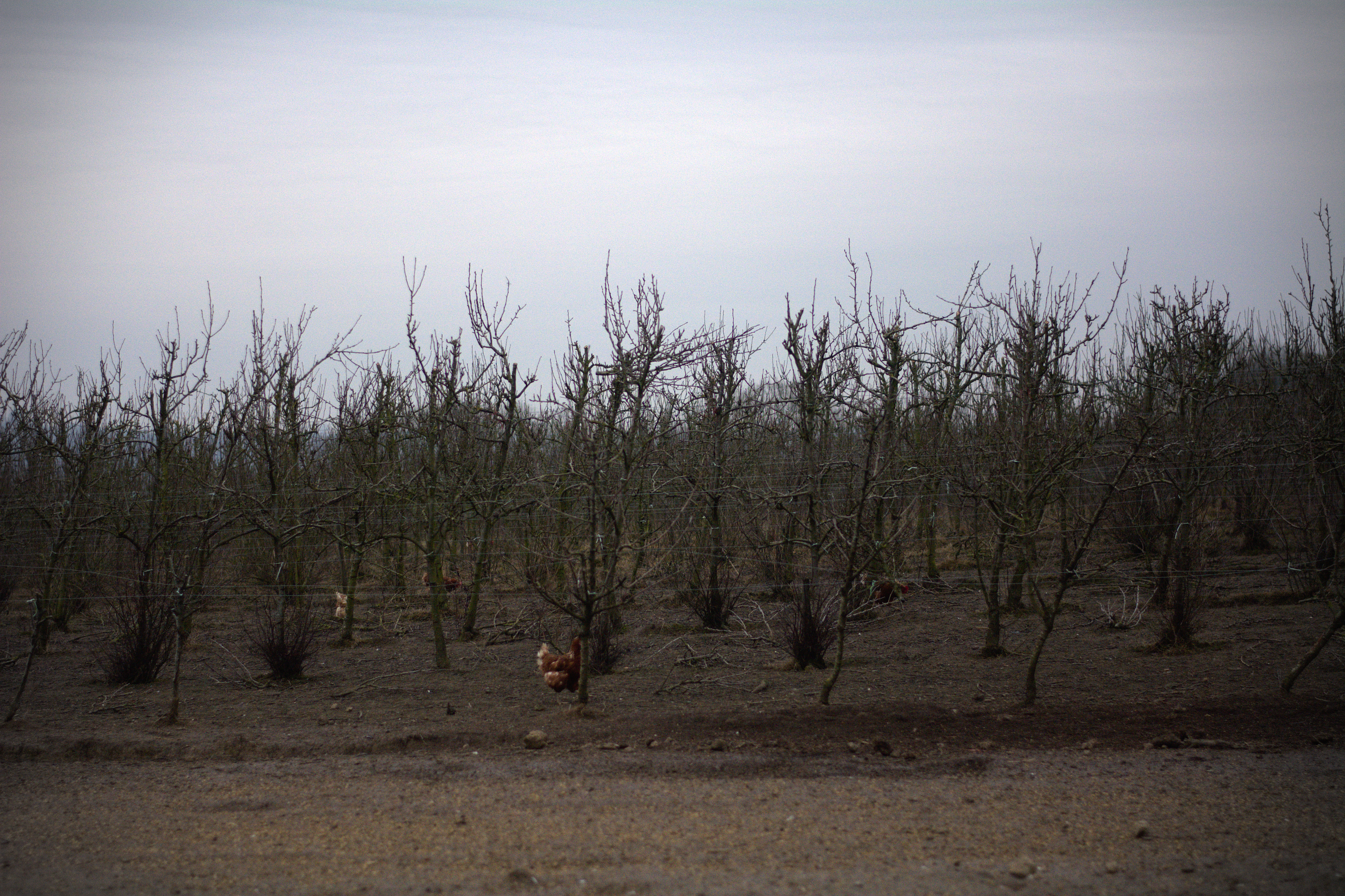

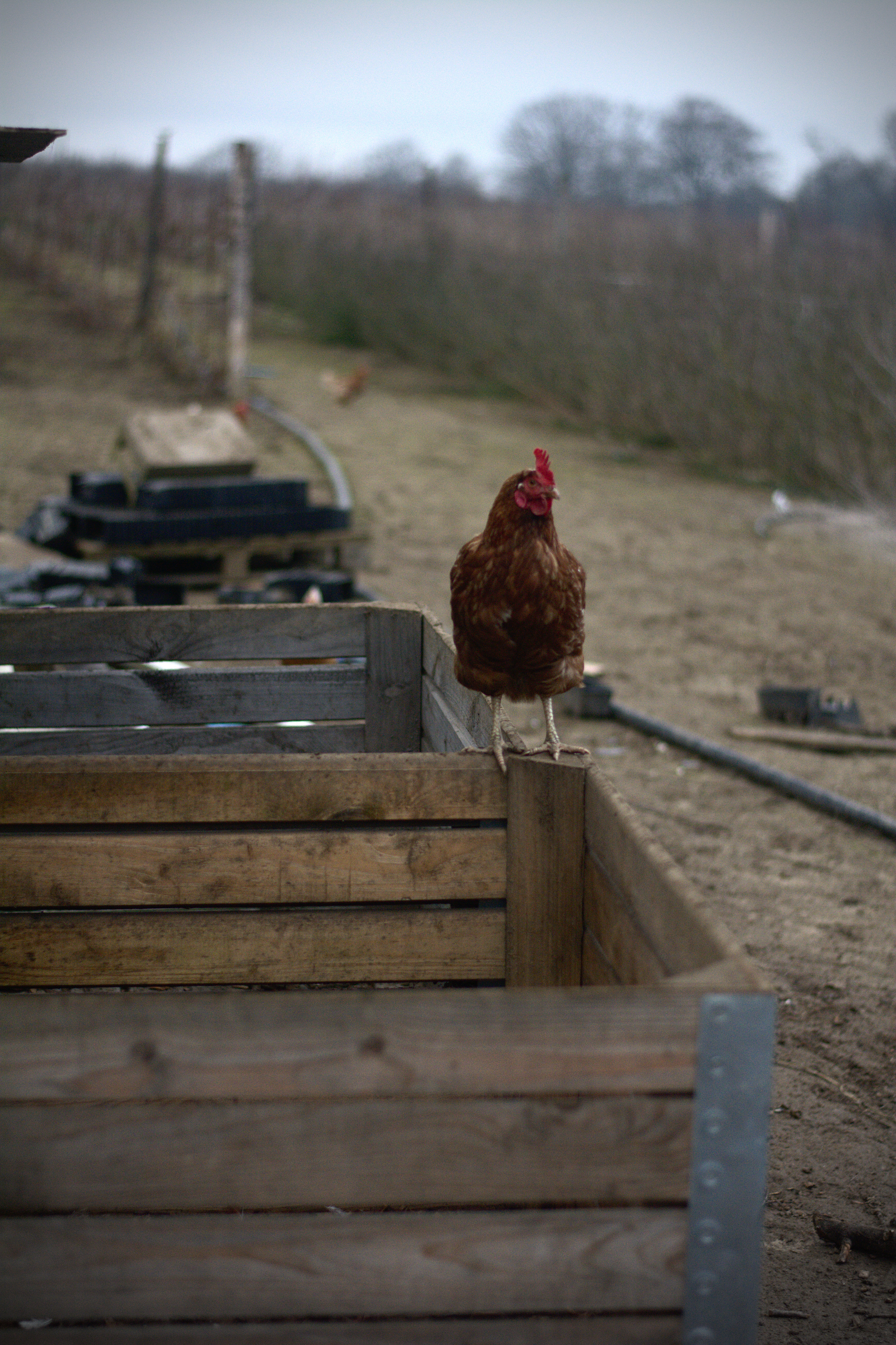
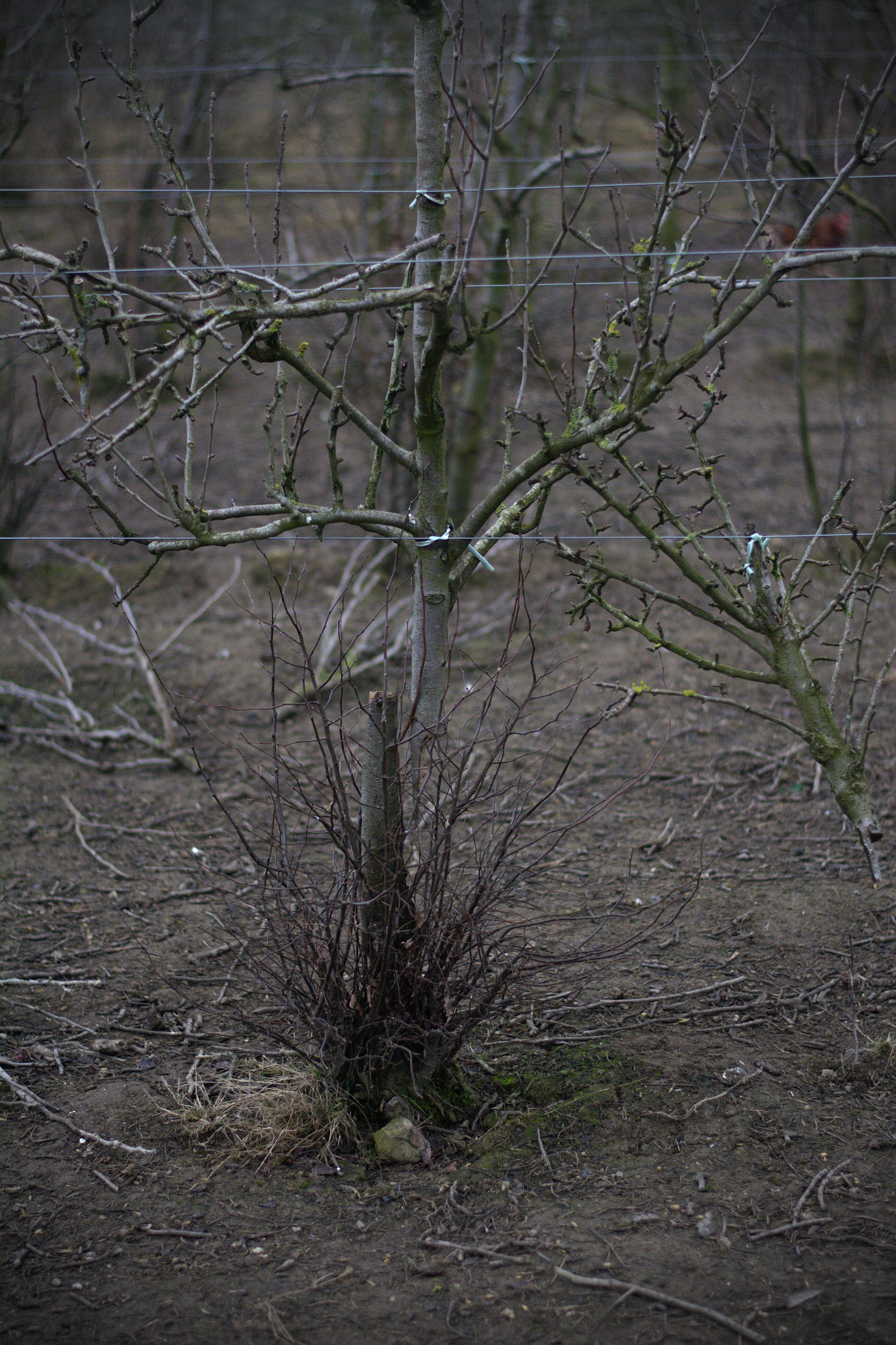
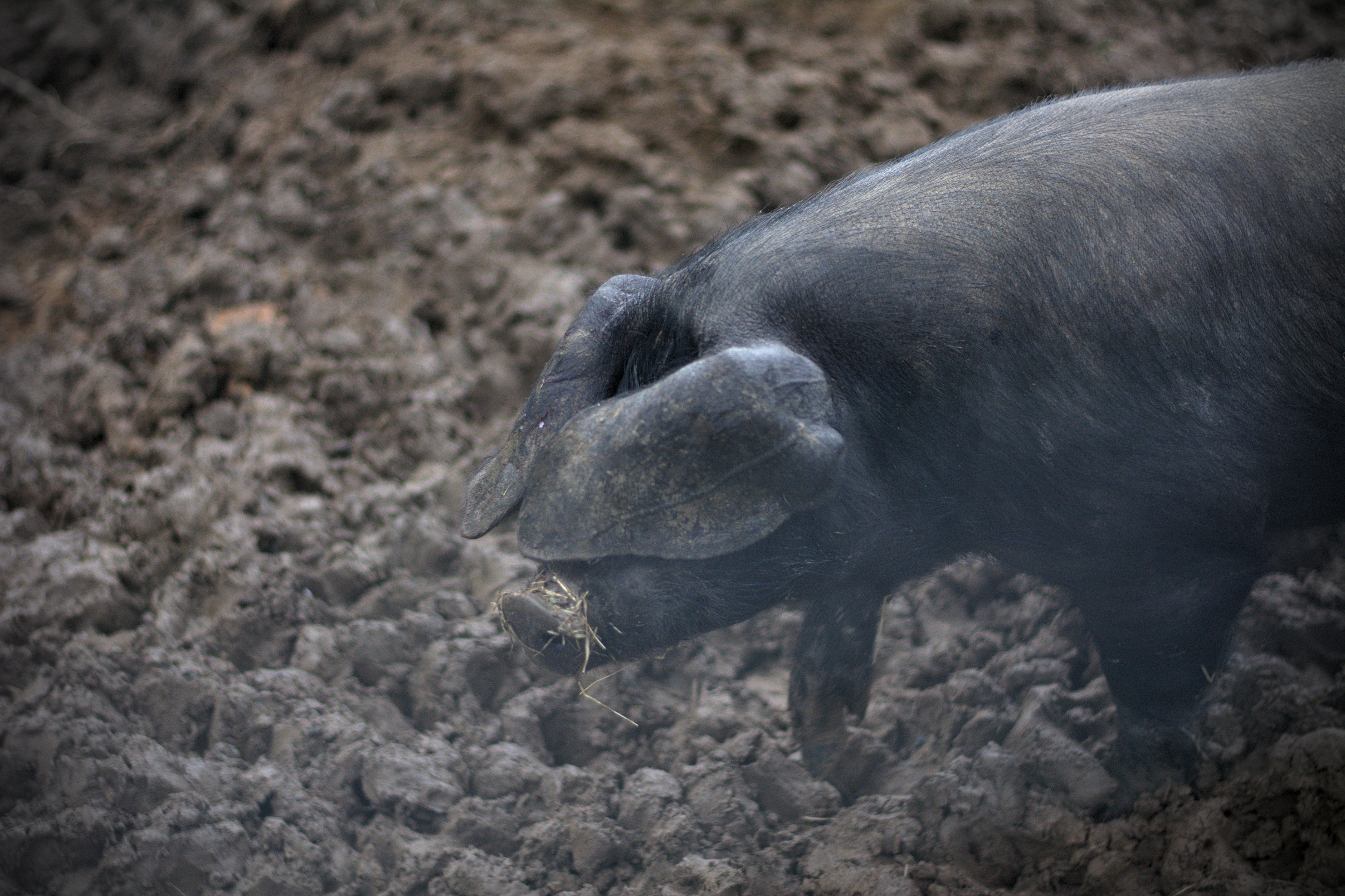
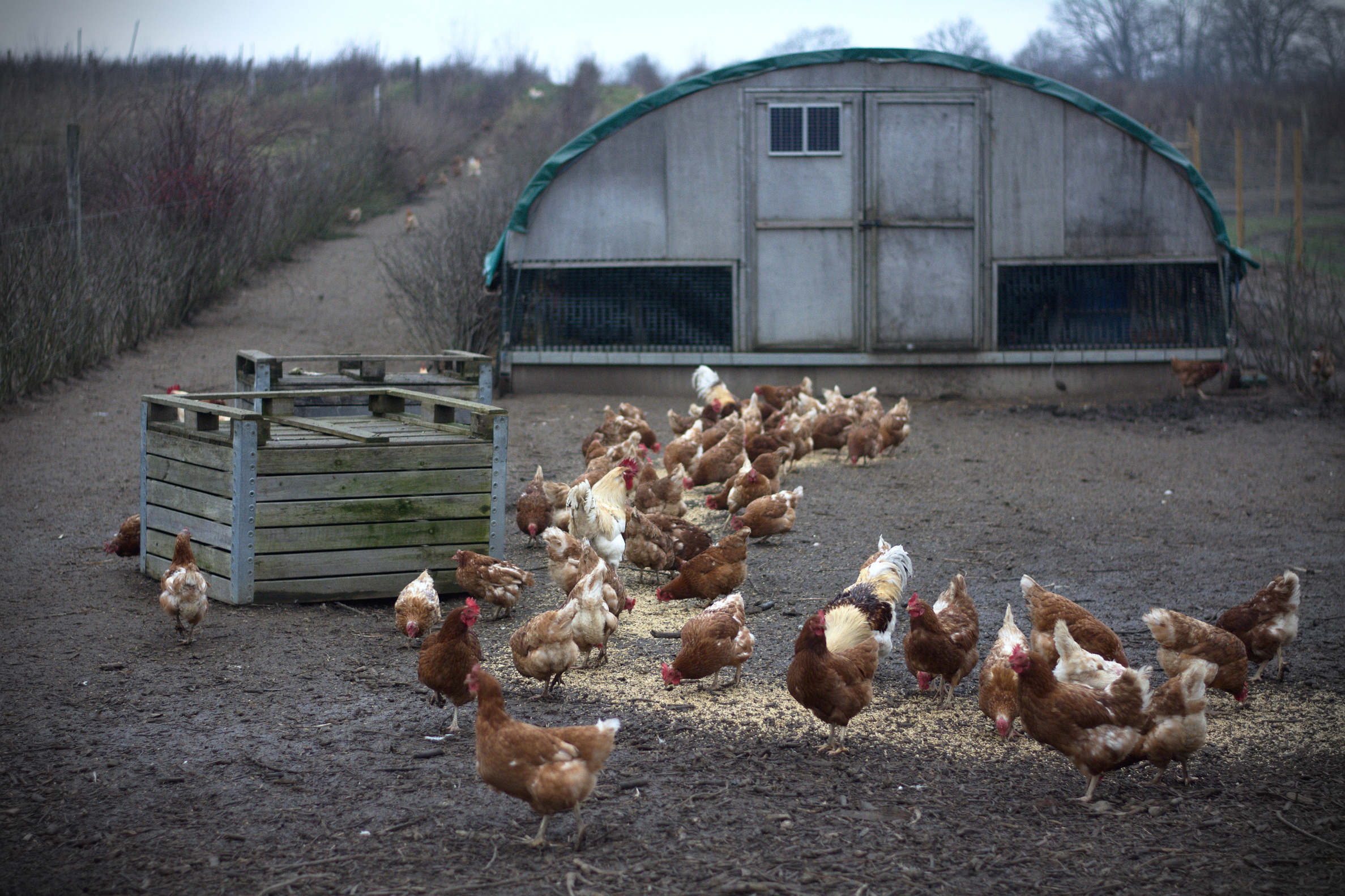

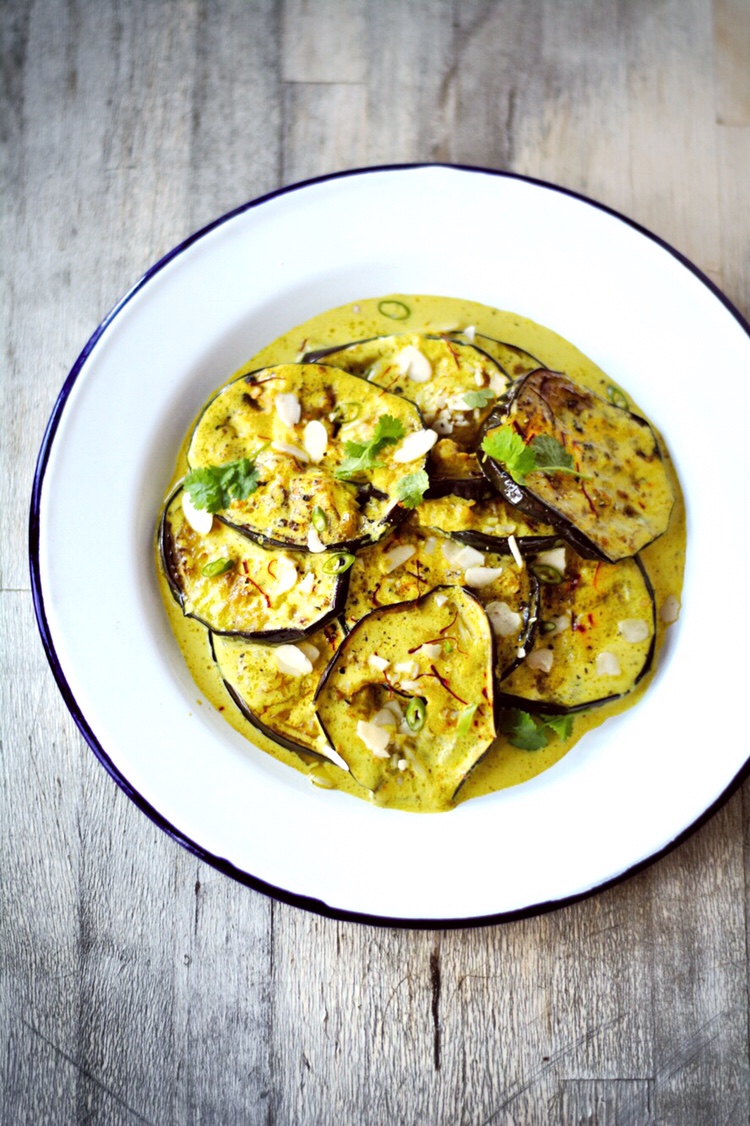 The more I cook, perhaps the older I get (or is it tireder), the fewer ingredients I want to use in a dish. And the simpler the food I'm making, the more delicious it seems to be.This week it's been a case of taking a vegetable and using that as the starting point for a meal. A little more thinking has had to be applied rather than thoughtlessly going with the usual starchy suspects you reach for on a rapidly darkening Tuesday evening.As if dealing with the sad acceptance that we don't live in an endless Swallows and Amazons summer wasn't enough, now we have to start eating properly again. No more cream teas and cake for the evening meal. Out has gone the pasta, rice and potatoes that form so many daily meals, and in, the sad acceptance that we are no longer inhabiting our 20 year old bodies.But it need not be dull as we slip headlong into turnip season. We are still heavy with aubergines, broccoli, cauliflower, courgettes and sweetcorn among other things. The salads are fading, but my appetite is growing. And as we lose nearly two hours of daylight over September's delicate and gentle colour change, we can start to get bolder and deeper with flavours.This recipe is based on the gloriously named Pushpesh Pant's 'curried aubergine in coconut sauce', which he says is from India's 'coastal region'. So just a small area then. I've added saffron, almond flakes, green chillies and coriander to mine to pep things up a little.Rich and exciting, it's texture is indecently silky, as if Liberty's had opened a dodgy Soho alleyway silk scarf shop. We had it twice this week, the juices mopped up with spiced
The more I cook, perhaps the older I get (or is it tireder), the fewer ingredients I want to use in a dish. And the simpler the food I'm making, the more delicious it seems to be.This week it's been a case of taking a vegetable and using that as the starting point for a meal. A little more thinking has had to be applied rather than thoughtlessly going with the usual starchy suspects you reach for on a rapidly darkening Tuesday evening.As if dealing with the sad acceptance that we don't live in an endless Swallows and Amazons summer wasn't enough, now we have to start eating properly again. No more cream teas and cake for the evening meal. Out has gone the pasta, rice and potatoes that form so many daily meals, and in, the sad acceptance that we are no longer inhabiting our 20 year old bodies.But it need not be dull as we slip headlong into turnip season. We are still heavy with aubergines, broccoli, cauliflower, courgettes and sweetcorn among other things. The salads are fading, but my appetite is growing. And as we lose nearly two hours of daylight over September's delicate and gentle colour change, we can start to get bolder and deeper with flavours.This recipe is based on the gloriously named Pushpesh Pant's 'curried aubergine in coconut sauce', which he says is from India's 'coastal region'. So just a small area then. I've added saffron, almond flakes, green chillies and coriander to mine to pep things up a little.Rich and exciting, it's texture is indecently silky, as if Liberty's had opened a dodgy Soho alleyway silk scarf shop. We had it twice this week, the juices mopped up with spiced 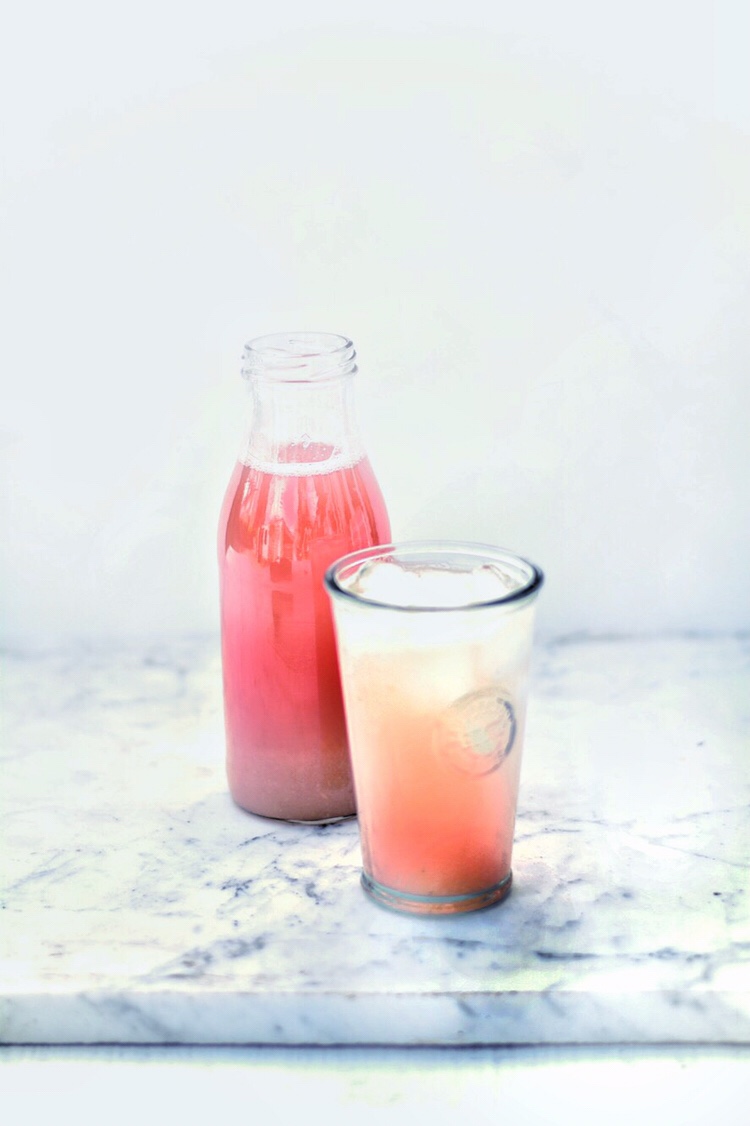 We found ourselves in the garden centre again the other day. A weekday and all. We passed through aisles of green and shelves trailing leaves and branches like lazy octopi.I bought a tarragon plant and a gooseberry bush, spurred on by the constant disappointment on the supermarkets shelves. I'll leave the tarragon a while to get established, unlike the parsley which I have had to plant a few extra pots of. We seem to use a lot in this house and the poor little things can't keep up.As for the gooseberries, those furry little fruits that seemed to be a permanent fixture of my late childhood summers, I shall, with hope and care, now have my own supply. And each year, when the season dawns, I'll be able to have the simple joy of having grown my own sour little bombs of flavour. They are so good turned into a
We found ourselves in the garden centre again the other day. A weekday and all. We passed through aisles of green and shelves trailing leaves and branches like lazy octopi.I bought a tarragon plant and a gooseberry bush, spurred on by the constant disappointment on the supermarkets shelves. I'll leave the tarragon a while to get established, unlike the parsley which I have had to plant a few extra pots of. We seem to use a lot in this house and the poor little things can't keep up.As for the gooseberries, those furry little fruits that seemed to be a permanent fixture of my late childhood summers, I shall, with hope and care, now have my own supply. And each year, when the season dawns, I'll be able to have the simple joy of having grown my own sour little bombs of flavour. They are so good turned into a 
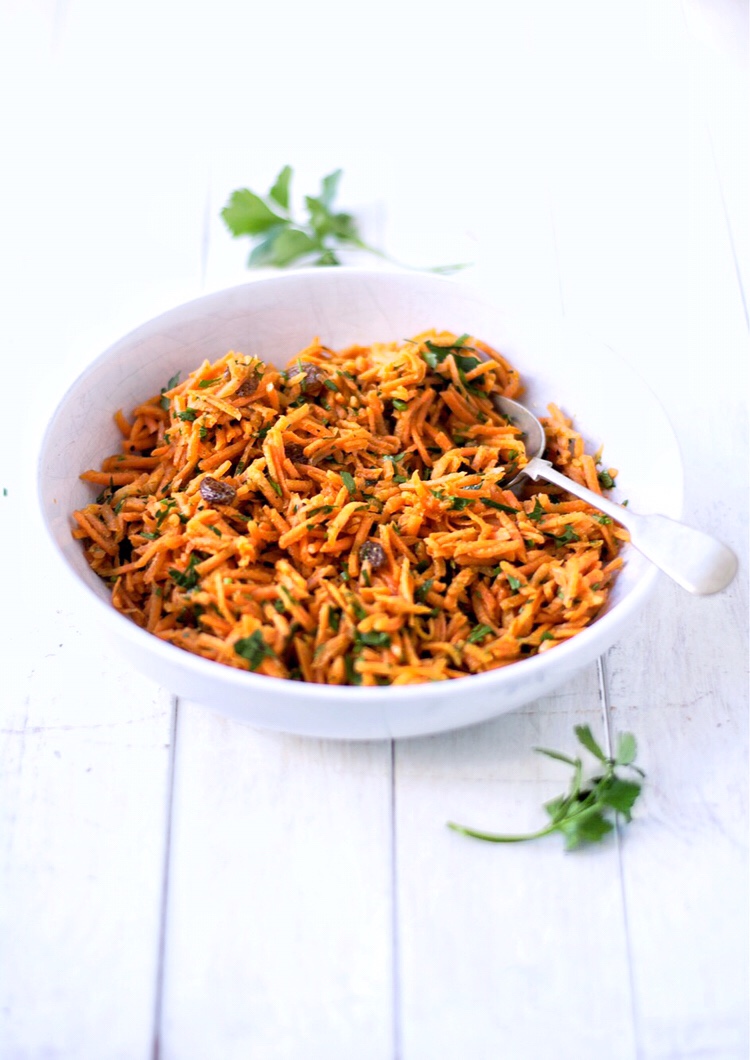 How are bricks made? How do they make glass? How do they build a roof? Frieda Kahlo was a famous painter. Is turmeric food colouring? Have we ever seen a caterpillar? Daddy, Noah's looking at me. I don't like it.These are the pressing issues of the day. And apparently must be addressed before I've had a cup of coffee. And although I woke up 20 minutes before everyone and had blissful calm before I had to turn into a human Wikipedia, it was still an assault on my delicate surfacing senses.And so to this week's food. I have such little space in my brain at the moment for anything other than the impending house move that the meals this week have needed to be simple and quick. We've had spaghetti and meatballs in tomato sauce; the meatballs browned from frozen and then cooked through in tinned tomatoes blitzed with chilli flakes, a spring onion, two cloves of garlic, olive oil and a large, large pinch of dried oregano.As is often the way, just adding a little dash of something can elevate a dish from the everyday. In this case, a large handful of chopped parsley, a good sprinkle of breadcrumbs, lemon zest and probably half the Parmesan and pepper grinder just gave it the edge on what is already delicious comfort food.The other night, we had some broccoli florets, blanched and quickly fried with garlic, ginger, spring onion and kohlrabi. I tossed that with sesame oil and seeds, soy sauce and some rice noodles and supper was on our laps in front of the telly in fifteen minutes.And as for the children, they've had Greek bean soup, corn on the cob with lime and butter, stewed rhubarb and chicken and mushroom in a creme fraiche and tomato sauce with rice and broccoli. Which was pronounced acceptable. But I do think they are starting to raise an eyebrow here and there at the sudden and often appearance of soups at the dinner table. Noah seems to think he can only eat it if the bread to soup ratio is one to one. And still complains it's not the same as the pumpkin soup they have at school. Ingrate.The best thing by far we eat this week though, was the carrot salad I made on Saturday night after we'd had dhal and naan and were still peckish. I had to use a packet of the children's Peppa Pig raisins, and perhaps that's where the secret to the success of the dish came. Or perhaps it was the amazing olive oil from I got from
How are bricks made? How do they make glass? How do they build a roof? Frieda Kahlo was a famous painter. Is turmeric food colouring? Have we ever seen a caterpillar? Daddy, Noah's looking at me. I don't like it.These are the pressing issues of the day. And apparently must be addressed before I've had a cup of coffee. And although I woke up 20 minutes before everyone and had blissful calm before I had to turn into a human Wikipedia, it was still an assault on my delicate surfacing senses.And so to this week's food. I have such little space in my brain at the moment for anything other than the impending house move that the meals this week have needed to be simple and quick. We've had spaghetti and meatballs in tomato sauce; the meatballs browned from frozen and then cooked through in tinned tomatoes blitzed with chilli flakes, a spring onion, two cloves of garlic, olive oil and a large, large pinch of dried oregano.As is often the way, just adding a little dash of something can elevate a dish from the everyday. In this case, a large handful of chopped parsley, a good sprinkle of breadcrumbs, lemon zest and probably half the Parmesan and pepper grinder just gave it the edge on what is already delicious comfort food.The other night, we had some broccoli florets, blanched and quickly fried with garlic, ginger, spring onion and kohlrabi. I tossed that with sesame oil and seeds, soy sauce and some rice noodles and supper was on our laps in front of the telly in fifteen minutes.And as for the children, they've had Greek bean soup, corn on the cob with lime and butter, stewed rhubarb and chicken and mushroom in a creme fraiche and tomato sauce with rice and broccoli. Which was pronounced acceptable. But I do think they are starting to raise an eyebrow here and there at the sudden and often appearance of soups at the dinner table. Noah seems to think he can only eat it if the bread to soup ratio is one to one. And still complains it's not the same as the pumpkin soup they have at school. Ingrate.The best thing by far we eat this week though, was the carrot salad I made on Saturday night after we'd had dhal and naan and were still peckish. I had to use a packet of the children's Peppa Pig raisins, and perhaps that's where the secret to the success of the dish came. Or perhaps it was the amazing olive oil from I got from 
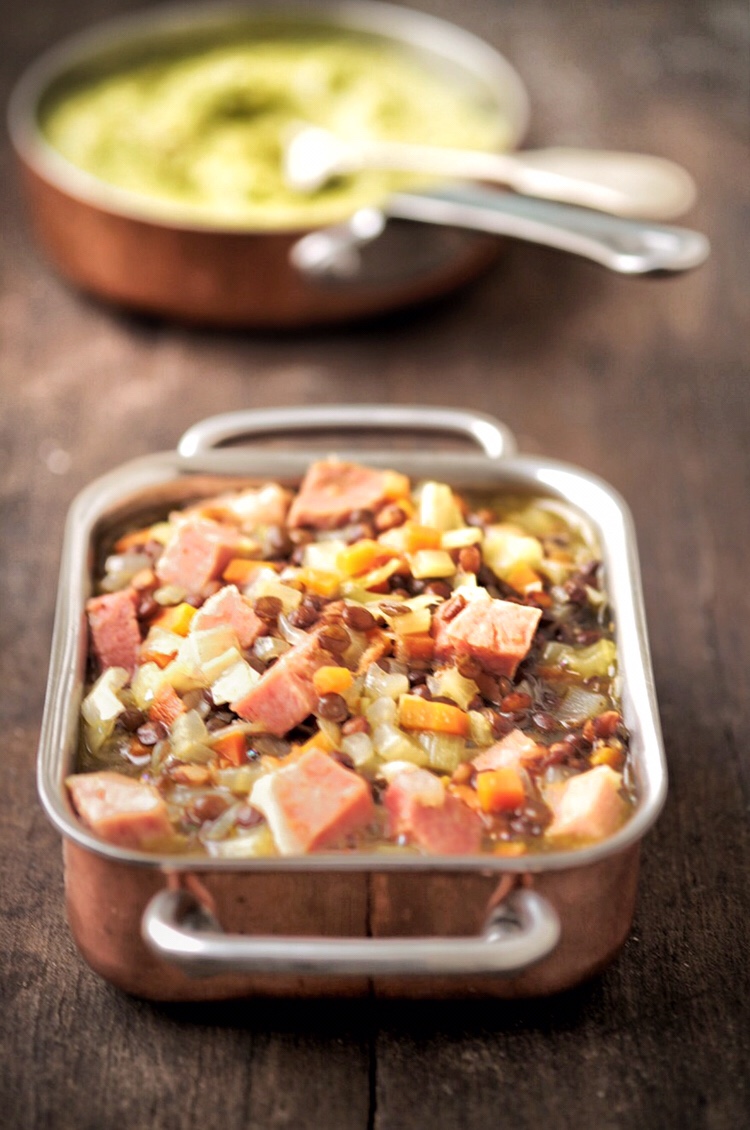 The warm smell of cooking as you get in from school is like a blanket covering you on the sofa in winter or a hot chocolate by the fire. My favourite, the one that always said something good was on the way, was -- and still is -- garlic and onions softly sautéeing in olive oil. That, for me, was when I knew there is some proper food coming, something prepared and cooked with care and attention, something that says "you are being nurtured". You can't smell a salad, can you?I do quite often cook the children fish fingers and peas for supper; sometimes we're all on the edge of sanity and even slicing an onion may just break me. And sometimes, I'll work over a hot stove for hours, wiping my brow with the towel of martyrdom just for the children to decide on a whim they don't like something they've wolfed down countless times before. They'll never turn down a roast on Sunday though. Sometimes you can never win, and sometimes, they'll surprise you by loving sparrow soufflé with chillies. But knowing there's always a hot meal on its way, and the kitchen is a place of happiness is something we all need.This recipe is perfect to fill the house with the kinds of smells to make you feel happy. The aromatic vegetables softening, the slight spice from the garam masala, the fresh bay leaves. And the simmering broth. It's also quick, if you take into account that you can cheat by using tinned cooked green lentils. But even if you cook them from scratch, it still doesn't take forever. I've made a courgette purée to go with it -- lentils are quite filling -- but if you feel like mashed potato instead, go for it.Ingredients200g cooked ham chunks. I had some in the freezer left over from Christmas250g cooked green lentils1 carrot1 stick of celery, plus leaves1 small onionThe white of a leek you've had hanging around for a few days2 fresh bay leavesChicken stock to cover1tbsp garam masalaSalt and white pepper to seasonFor the courgette:1 largeish courgette2 shallots1 fat clove of garlicOlive oilA tablespoon or two of butterSalt to seasonMethodSlice the carrots, celery, onion and leek into dice as small as you can manage.Heat a saucepan with some olive oil and throw them in. Add the bay leaves, season and stir.Cook gently for ten minutes until softened then add the ham, lentils, garam masala, seasoning and stock.Bring to the boil for a few minutes then simmer for a further ten with a lid on.Make the courgettes by heating a sauté pan with some olive oil then adding the garlic and shallot. Season well and cook for a few minutes, until starting to colour.Turn the heat up and add the courgettes, toss around and cook until turning golden here and there.Transfer to a blender or food processor, add the butter and blend to a purée. Taste and adjust the seasoning. It probably needs more salt. And butter.Serve with the lentils and ham.
The warm smell of cooking as you get in from school is like a blanket covering you on the sofa in winter or a hot chocolate by the fire. My favourite, the one that always said something good was on the way, was -- and still is -- garlic and onions softly sautéeing in olive oil. That, for me, was when I knew there is some proper food coming, something prepared and cooked with care and attention, something that says "you are being nurtured". You can't smell a salad, can you?I do quite often cook the children fish fingers and peas for supper; sometimes we're all on the edge of sanity and even slicing an onion may just break me. And sometimes, I'll work over a hot stove for hours, wiping my brow with the towel of martyrdom just for the children to decide on a whim they don't like something they've wolfed down countless times before. They'll never turn down a roast on Sunday though. Sometimes you can never win, and sometimes, they'll surprise you by loving sparrow soufflé with chillies. But knowing there's always a hot meal on its way, and the kitchen is a place of happiness is something we all need.This recipe is perfect to fill the house with the kinds of smells to make you feel happy. The aromatic vegetables softening, the slight spice from the garam masala, the fresh bay leaves. And the simmering broth. It's also quick, if you take into account that you can cheat by using tinned cooked green lentils. But even if you cook them from scratch, it still doesn't take forever. I've made a courgette purée to go with it -- lentils are quite filling -- but if you feel like mashed potato instead, go for it.Ingredients200g cooked ham chunks. I had some in the freezer left over from Christmas250g cooked green lentils1 carrot1 stick of celery, plus leaves1 small onionThe white of a leek you've had hanging around for a few days2 fresh bay leavesChicken stock to cover1tbsp garam masalaSalt and white pepper to seasonFor the courgette:1 largeish courgette2 shallots1 fat clove of garlicOlive oilA tablespoon or two of butterSalt to seasonMethodSlice the carrots, celery, onion and leek into dice as small as you can manage.Heat a saucepan with some olive oil and throw them in. Add the bay leaves, season and stir.Cook gently for ten minutes until softened then add the ham, lentils, garam masala, seasoning and stock.Bring to the boil for a few minutes then simmer for a further ten with a lid on.Make the courgettes by heating a sauté pan with some olive oil then adding the garlic and shallot. Season well and cook for a few minutes, until starting to colour.Turn the heat up and add the courgettes, toss around and cook until turning golden here and there.Transfer to a blender or food processor, add the butter and blend to a purée. Taste and adjust the seasoning. It probably needs more salt. And butter.Serve with the lentils and ham.
 Now the Christmas tree has been cut up and put in the bin by the dead of night and the year gently settles into itself, I find myself staring out timidly from the duvet, slightly scared of the outside world.The fondue set has also been put back into storage; it is a dish we only get round to on new year's eve. This time we had thin cubes of beef fillet tail and dipped them in hot melted butter, loaded with grated garlic or a punchy, herb-laced olive oil. A game of Jenga later and we were all tucked up in bed well before Big Ben bonged.It's now back to more normal meals, things we can leave to bubble in a pan for an hour or two, or cook gently in the oven on the weekends behind the scenes for use midweek while trying to find socks for school tomorrow.In that vein then, here is a comforting bean dish that is rich, easy and nourishing. There is no need to soak the beans overnight, cook them from dried for an hour and a half, they are more flavoursome and equally as tender. You could, if you prefer, use tinned, cooked haricots, making this even quicker and easier to bring together and perhaps something you would make on a cold January Wednesday.For this recipe, I used the stock I'd made from the chicken left over from Saturday's lunch of pot roast chicken which I'd cooked on leeks, garlic, lemon and onions. A good few handfuls of cubed leftover ham went in and then to serve it, I made a roux, loosened it with the juices from the chicken and blended in a little double cream. It was rather like a chicken, leek and ham pie without the pastry, and none the worse for that. In the past, with equal success, I've used on of those little gel stock pots. Whatever you've got.You can have this with a quickly seared and caramelised pork chop, on it's own pretending you're a cowboy, or like we did this week with some shredded savoy cabbage, buttery and sloshed with lemon juice and pepper. There was a howling wind that night, and this is real food for those dark winter evenings of which we still have quite a few ahead.Ingredients100g haricot beans500-600ml boiling water1 celery stick1 medium carrot1 small onion100g chorizo180ml chicken stock2 fresh bay leavesParsley to serveSalt and pepper to seasonMethodPut the beans straight into the saucepan of boiling water with a little salt and simmer gently for an hour and a half. Keep an eye on it to make sure it doesn't boil dry. Most of the liquid will be absorbed by the end. You can leave them to cool and use later, or keep refrigerated for the next day.Cube the chorizo, quite small, and fry in a sauté pan on a fairly gentle heat until the rust orange oil comes out. Add the bay leaves.Finely dice the celery, carrot and onion and add to the pan. You could blitz them in the food processor if you prefer, but I like to chop by hand, to be a little more connected to the food. There are enough machines in our lives, if you've got time to go on Facebook, you've got time to chop an onion. And to be honest, I'll let the machines do the rubbish bits like washing up.Stir well and cook gently until softened. Season a little and cook gently for about ten minutes.Add the beans and stock, bring to the boil and then simmer for about five minutes before serving with a good amount of black pepper and chopped parsley.If there is any left, you could serve it for lunch the next day with a crisp fried egg, the yolk mixing in to be scooped up with a good slice of toasted and buttered bread.This weekWatched: '
Now the Christmas tree has been cut up and put in the bin by the dead of night and the year gently settles into itself, I find myself staring out timidly from the duvet, slightly scared of the outside world.The fondue set has also been put back into storage; it is a dish we only get round to on new year's eve. This time we had thin cubes of beef fillet tail and dipped them in hot melted butter, loaded with grated garlic or a punchy, herb-laced olive oil. A game of Jenga later and we were all tucked up in bed well before Big Ben bonged.It's now back to more normal meals, things we can leave to bubble in a pan for an hour or two, or cook gently in the oven on the weekends behind the scenes for use midweek while trying to find socks for school tomorrow.In that vein then, here is a comforting bean dish that is rich, easy and nourishing. There is no need to soak the beans overnight, cook them from dried for an hour and a half, they are more flavoursome and equally as tender. You could, if you prefer, use tinned, cooked haricots, making this even quicker and easier to bring together and perhaps something you would make on a cold January Wednesday.For this recipe, I used the stock I'd made from the chicken left over from Saturday's lunch of pot roast chicken which I'd cooked on leeks, garlic, lemon and onions. A good few handfuls of cubed leftover ham went in and then to serve it, I made a roux, loosened it with the juices from the chicken and blended in a little double cream. It was rather like a chicken, leek and ham pie without the pastry, and none the worse for that. In the past, with equal success, I've used on of those little gel stock pots. Whatever you've got.You can have this with a quickly seared and caramelised pork chop, on it's own pretending you're a cowboy, or like we did this week with some shredded savoy cabbage, buttery and sloshed with lemon juice and pepper. There was a howling wind that night, and this is real food for those dark winter evenings of which we still have quite a few ahead.Ingredients100g haricot beans500-600ml boiling water1 celery stick1 medium carrot1 small onion100g chorizo180ml chicken stock2 fresh bay leavesParsley to serveSalt and pepper to seasonMethodPut the beans straight into the saucepan of boiling water with a little salt and simmer gently for an hour and a half. Keep an eye on it to make sure it doesn't boil dry. Most of the liquid will be absorbed by the end. You can leave them to cool and use later, or keep refrigerated for the next day.Cube the chorizo, quite small, and fry in a sauté pan on a fairly gentle heat until the rust orange oil comes out. Add the bay leaves.Finely dice the celery, carrot and onion and add to the pan. You could blitz them in the food processor if you prefer, but I like to chop by hand, to be a little more connected to the food. There are enough machines in our lives, if you've got time to go on Facebook, you've got time to chop an onion. And to be honest, I'll let the machines do the rubbish bits like washing up.Stir well and cook gently until softened. Season a little and cook gently for about ten minutes.Add the beans and stock, bring to the boil and then simmer for about five minutes before serving with a good amount of black pepper and chopped parsley.If there is any left, you could serve it for lunch the next day with a crisp fried egg, the yolk mixing in to be scooped up with a good slice of toasted and buttered bread.This weekWatched: '


 It's not alchemy, but trying to turn base ingredients into the elusive gold perfection of a taste memory with nothing to work on but hearsay and supposition and only a dishes' name sees me often in the kitchen pacing about, reading, thinking, scribbling, chopping, emptying out spice drawers then walking away to do something on the new to do list that I've been given by Bee and returning later, like a cat pacing suspiciously around it's prey.My fascination with the aubergine has taken a new turn this week. And with it, comes something I'm now going to have to add to the ongoing experiment book. It's called kashke bimjebob, josh and kajagoogo, koj and betjeman, jok and bitumen or, I don't really know, and my friend Sam Stowell who introduced me to this dish said he gets laughed at every time he orders it in the restaurant because he can't pronounce it either.The version here, my first attempt is delicious. But I think the chefs in the restaurant must have added some kind of special voodoo to theirs that they're not going to tell me in a hurry. This is close, but not quite. The next attempt may involve burning the aubergine skin on a flame to make it smokier, toasting the walnuts and perhaps almost doubling the garlic. And, and, and.Traditionally this is made using whey. While this is pretty hard to buy, you can easily make it yourself by filling a small muslin with natural yoghurt and draining it overnight into a bowl in the fridge. This will also give you some cream cheese as a by product. Failing that, you can use natural yoghurt as is. I added a splash of keffir to mine as well.But don't let that stop you making this version and carrying on with your adjustments. A good aubergine dip is a winner anyway. The bread is easy to make, and the dip, served alongside some halved cherry plum tomatoes dressed with a little oil, salt and vinegar made a fresh and wholesome lunch on what was a rather hot day.Ingredients2 auberginesRather more olive oil than you think you needA pinch or two of salt5 cloves of garlic2tbsp natural yoghurt100ml keffir or whey2 brown onions, sliced and dicedA handful or two of walnuts, plus a few extra to dress2-3tbsp dried mintA couple of spring onionsFor the bread:500g plain flour350ml water14g fresh yeast (or 7g dried)A large pinch of salt1tsp sugarSesame seeds to dressMethodMake the bread by mixing together the yeast, sugar and water until it's fully dissolved. Add the flour and salt and knead for ten minutes, or do it in a stand mixer for five.Shape in to a ball and put in an oiled bowl with a tea-towel over it for about an hour, or until it's doubled in size. This depends on how hot it is in your kitchen...Meanwhile, heat the oven to high, about 200c or gas 8. Pierce the aubergines with a knife so they don't pop in the oven, put them on an oven tray, drizzle with oil and a sprinkle of salt and cook for about 30 minutes.Divide the dough into eight balls, cover and leave for another half an hour before rolling out into flatbreads. Poke all over with your fingers to make dimples, brush with water and sprinkle over the sesame seeds.Cook for around 25 minutes until starting to turn golden then keep warm in tea-towels while you get everything else together.Sauté the onions in some olive oil until turning golden then add the garlic and mint and cook for a minute or two longer. Season well.Blitz the walnuts to a crumb in a food processor or blender then add the onion mix and aubergine, having chopped off its stem.Add the yoghurt, or whey or whatever you're using and blend well. Taste and adjust the seasoning, adding more of whatever you feel it needs.Serve the dip with more olive oil, a scattering of walnuts and a sprinkle of dried mint and chopped spring onion if you fancy.
It's not alchemy, but trying to turn base ingredients into the elusive gold perfection of a taste memory with nothing to work on but hearsay and supposition and only a dishes' name sees me often in the kitchen pacing about, reading, thinking, scribbling, chopping, emptying out spice drawers then walking away to do something on the new to do list that I've been given by Bee and returning later, like a cat pacing suspiciously around it's prey.My fascination with the aubergine has taken a new turn this week. And with it, comes something I'm now going to have to add to the ongoing experiment book. It's called kashke bimjebob, josh and kajagoogo, koj and betjeman, jok and bitumen or, I don't really know, and my friend Sam Stowell who introduced me to this dish said he gets laughed at every time he orders it in the restaurant because he can't pronounce it either.The version here, my first attempt is delicious. But I think the chefs in the restaurant must have added some kind of special voodoo to theirs that they're not going to tell me in a hurry. This is close, but not quite. The next attempt may involve burning the aubergine skin on a flame to make it smokier, toasting the walnuts and perhaps almost doubling the garlic. And, and, and.Traditionally this is made using whey. While this is pretty hard to buy, you can easily make it yourself by filling a small muslin with natural yoghurt and draining it overnight into a bowl in the fridge. This will also give you some cream cheese as a by product. Failing that, you can use natural yoghurt as is. I added a splash of keffir to mine as well.But don't let that stop you making this version and carrying on with your adjustments. A good aubergine dip is a winner anyway. The bread is easy to make, and the dip, served alongside some halved cherry plum tomatoes dressed with a little oil, salt and vinegar made a fresh and wholesome lunch on what was a rather hot day.Ingredients2 auberginesRather more olive oil than you think you needA pinch or two of salt5 cloves of garlic2tbsp natural yoghurt100ml keffir or whey2 brown onions, sliced and dicedA handful or two of walnuts, plus a few extra to dress2-3tbsp dried mintA couple of spring onionsFor the bread:500g plain flour350ml water14g fresh yeast (or 7g dried)A large pinch of salt1tsp sugarSesame seeds to dressMethodMake the bread by mixing together the yeast, sugar and water until it's fully dissolved. Add the flour and salt and knead for ten minutes, or do it in a stand mixer for five.Shape in to a ball and put in an oiled bowl with a tea-towel over it for about an hour, or until it's doubled in size. This depends on how hot it is in your kitchen...Meanwhile, heat the oven to high, about 200c or gas 8. Pierce the aubergines with a knife so they don't pop in the oven, put them on an oven tray, drizzle with oil and a sprinkle of salt and cook for about 30 minutes.Divide the dough into eight balls, cover and leave for another half an hour before rolling out into flatbreads. Poke all over with your fingers to make dimples, brush with water and sprinkle over the sesame seeds.Cook for around 25 minutes until starting to turn golden then keep warm in tea-towels while you get everything else together.Sauté the onions in some olive oil until turning golden then add the garlic and mint and cook for a minute or two longer. Season well.Blitz the walnuts to a crumb in a food processor or blender then add the onion mix and aubergine, having chopped off its stem.Add the yoghurt, or whey or whatever you're using and blend well. Taste and adjust the seasoning, adding more of whatever you feel it needs.Serve the dip with more olive oil, a scattering of walnuts and a sprinkle of dried mint and chopped spring onion if you fancy.
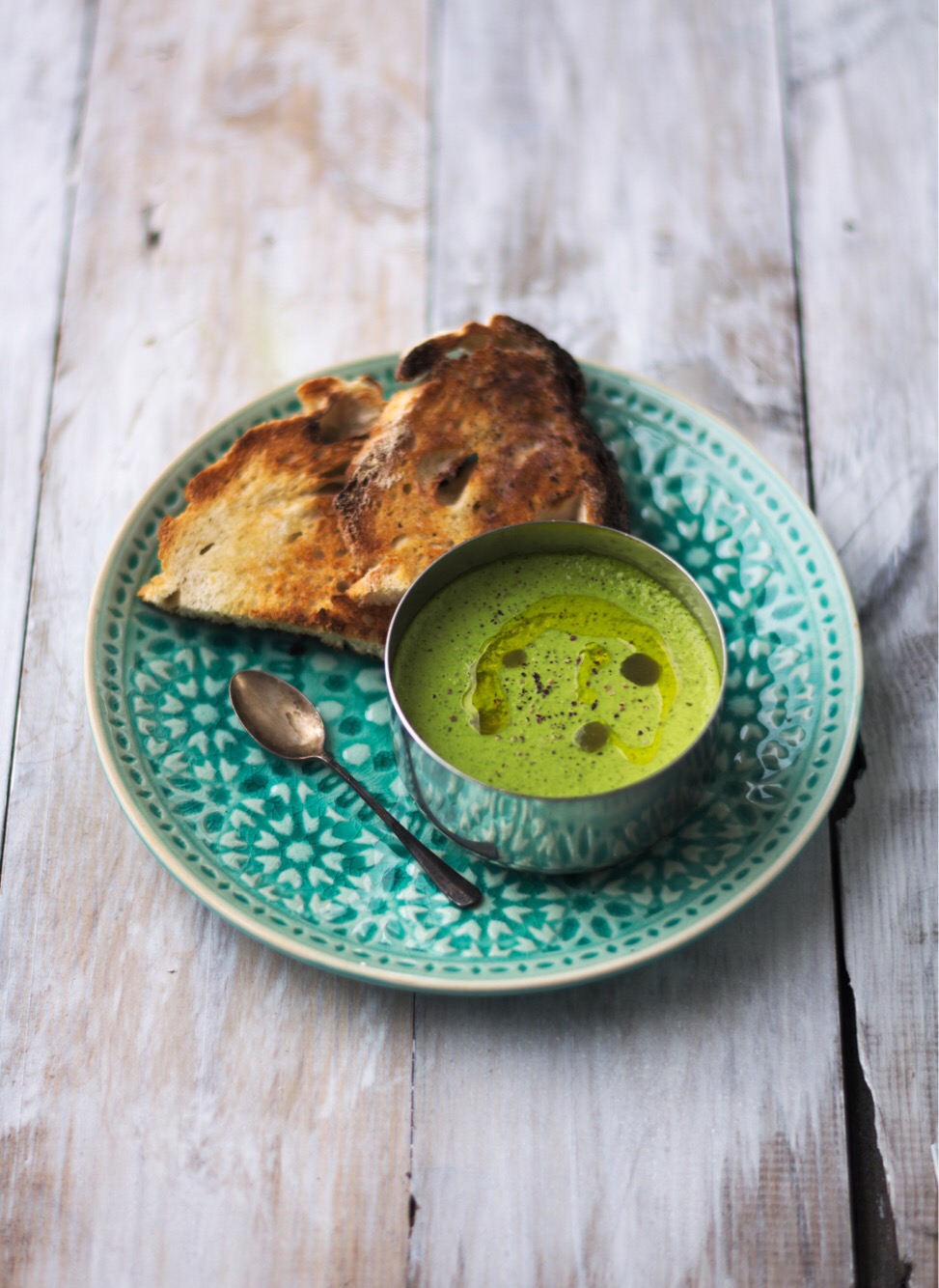 There is a strange kind of calm in the house. Just the gentle hum of the washing machine in the background. I hear a car pass by and the clock ticking on the wall. It's a special kind of silence now the children are back in school. I've even turned off the radio that I normally keep on for a kind of company so I can hear the quiet clearly.The early morning sun on the walk to school this morning shone on one half of the road. Maya asked to not walk in the shade so she could feel it on her face. Our hands were a little chilly, the day still warming up. It is after all, only April.All the trees round here are now full of leaves. Most of the blossom has fallen and some still carpets the pavements like the confetti in the aftermath of a wedding, fluttering around every so often in the light wind.Last night we sat down as a family and ate a cottage pie with garlic green beans. A hearty meal eaten in the early evening still-light as the days lengthen toward summer. We can move on from these winter dishes now, so yesterday was a kind of farewell.And as the wild garlic appears everywhere, like a surreptitious Frenchman in the hedges, other greens and shoots and tender vegetables fill the stalls at the market, colours taking over from the drab dullness that paint companies may call 'dried turnip'. I bought a large bag of sorrel there this weekend. Usually I raid my mother-in-law's plentiful supply from her garden, along with the garlic leaves and flowers, but as I was there, I though a few pounds for a plentiful bag was worth it.This recipe comes, originally from my mother-in-law Sue. She is to take all credit for it and it is so delicious, zest, clean and fresh tasting that I'm sharing it here. It's almost effortless to make and is everything good cooking should be. Simple, good ingredients, full of flavour all coming together to give you something more than the sum of its parts. No doubt, you could try it too with a bit of wild garlic added, or if you're unable to get sorrel, spinach, a splash of lemon and some nutmeg would be equally tasty, but I urge you to try as hard as you can to find this lemony, fresh leaf.Ingredients for twoA handful or two of sorrel leaves, any tough stems removed250ml double cream2 eggs. Duck eggs would be great as wellSalt and pepper to seasonThat really is all you need.MethodI have a steamer pan which is perfect for this, mine fits two steel ramekins on the steamer basket, but a tray on the hob filled with water and the eggs in ramekins on a trivet bain marie style works well too over a gentle heat. You could even poach them and transfer them to a ramekin if you fancy.However you choose to cook the eggs, they should be just past the point of runny-yolked, and not quite at the set point, so keep an eye on them.While they are gently cooking, Heat the cream to just below boiling in a saucepan and season it well. Put the sorrel in a blender and pour in the hot cream before blitzing to a vivid green sauce. Doing it this way keeps the colour bright. Taste and adjust the seasoning then pour over the eggs and just cook for a minute further to take away the rawness of the sorrel.Serve immediately with some sourdough toast and salad. I drizzled a little green chilli sauce on mine with a dash of rapeseed oil. Not enough to change the flavour, but just enough to tickle the tongue.
There is a strange kind of calm in the house. Just the gentle hum of the washing machine in the background. I hear a car pass by and the clock ticking on the wall. It's a special kind of silence now the children are back in school. I've even turned off the radio that I normally keep on for a kind of company so I can hear the quiet clearly.The early morning sun on the walk to school this morning shone on one half of the road. Maya asked to not walk in the shade so she could feel it on her face. Our hands were a little chilly, the day still warming up. It is after all, only April.All the trees round here are now full of leaves. Most of the blossom has fallen and some still carpets the pavements like the confetti in the aftermath of a wedding, fluttering around every so often in the light wind.Last night we sat down as a family and ate a cottage pie with garlic green beans. A hearty meal eaten in the early evening still-light as the days lengthen toward summer. We can move on from these winter dishes now, so yesterday was a kind of farewell.And as the wild garlic appears everywhere, like a surreptitious Frenchman in the hedges, other greens and shoots and tender vegetables fill the stalls at the market, colours taking over from the drab dullness that paint companies may call 'dried turnip'. I bought a large bag of sorrel there this weekend. Usually I raid my mother-in-law's plentiful supply from her garden, along with the garlic leaves and flowers, but as I was there, I though a few pounds for a plentiful bag was worth it.This recipe comes, originally from my mother-in-law Sue. She is to take all credit for it and it is so delicious, zest, clean and fresh tasting that I'm sharing it here. It's almost effortless to make and is everything good cooking should be. Simple, good ingredients, full of flavour all coming together to give you something more than the sum of its parts. No doubt, you could try it too with a bit of wild garlic added, or if you're unable to get sorrel, spinach, a splash of lemon and some nutmeg would be equally tasty, but I urge you to try as hard as you can to find this lemony, fresh leaf.Ingredients for twoA handful or two of sorrel leaves, any tough stems removed250ml double cream2 eggs. Duck eggs would be great as wellSalt and pepper to seasonThat really is all you need.MethodI have a steamer pan which is perfect for this, mine fits two steel ramekins on the steamer basket, but a tray on the hob filled with water and the eggs in ramekins on a trivet bain marie style works well too over a gentle heat. You could even poach them and transfer them to a ramekin if you fancy.However you choose to cook the eggs, they should be just past the point of runny-yolked, and not quite at the set point, so keep an eye on them.While they are gently cooking, Heat the cream to just below boiling in a saucepan and season it well. Put the sorrel in a blender and pour in the hot cream before blitzing to a vivid green sauce. Doing it this way keeps the colour bright. Taste and adjust the seasoning then pour over the eggs and just cook for a minute further to take away the rawness of the sorrel.Serve immediately with some sourdough toast and salad. I drizzled a little green chilli sauce on mine with a dash of rapeseed oil. Not enough to change the flavour, but just enough to tickle the tongue.
 Potato has to be one of life's great comfort foods. And while I rail about the result versus the time and planning taken to bake a jacket potato to golden crunchy skin and a fluffy inside, there's no denying that slathered in butter, salt, pepper and melting Cheddar cheese, there's not much to rival it in the crawling under the duvet of food stakes.There are so many things you can do with the potato as we know, but here, because it's such a great absorber of flavour -think of the roast potatoes sucking up the juices from the meat at the end of Sunday lunch- I've used it in a curry. This goes a little beyond the quick spinach and potato saag aloo in that the spice mix is a lot more involved, it's a little saucier and the addition of tomatoes gives it a tangy and sweet richness.It's a dish I happily have on its own, but equally will go fantastically well as a side dish for a slow-roast spicy marinated lamb dish if you want a more exciting Sunday. It also makes a great dosa filling, and the chilli in this will certainly make for a more exciting breakfast. Perhaps a little too exciting, but it will certainly wake you up. And possibly ruin the day if you feed it to the children instead of egg on toast or porridge.Make the spice mix in advance and keep it in an airtight jar, then it's a matter of moments to put the dish together and leave it to simmer away for about 25 minutes to cook and thicken.IngredientsFor the spice mix:I used a combination of the following in fairly equal quantities, but you can adjust if you prefer it to have more or less heat, more aniseedy flavour and so on.SaltChilli powderGround turmericBlack mustard seedMango powderCardamonClovesFenugreek seedCuminCoriander seedFennel seedNigella seedCitric acidGarlic powderBlack pepperFor the curry:1kg Maris Piper potatoes, cut into smallish chunks150g cherry tomatoes4tbsp spice mixA few handfuls of spinachFresh coriander and sliced green chilli to serveMethodBlitz the ingredients for the spice mix into a powder. After you've blitzed it all, add some whole coriander, cumin, fennel and nigella seeds which give the finished dish an extra element of flavour.Put the potatoes, four tablespoons of spice mix and tomatoes in a large saucepan and just cover with water. Bring to the boil and cook until the potatoes are soft and the water has reduced by about half.Mash some of the potato into the liquid to thicken it and add the spinach.Stir well until the spinach has wilted, check the seasoning, add some coriander leaves and green chilli and serve. Easy.
Potato has to be one of life's great comfort foods. And while I rail about the result versus the time and planning taken to bake a jacket potato to golden crunchy skin and a fluffy inside, there's no denying that slathered in butter, salt, pepper and melting Cheddar cheese, there's not much to rival it in the crawling under the duvet of food stakes.There are so many things you can do with the potato as we know, but here, because it's such a great absorber of flavour -think of the roast potatoes sucking up the juices from the meat at the end of Sunday lunch- I've used it in a curry. This goes a little beyond the quick spinach and potato saag aloo in that the spice mix is a lot more involved, it's a little saucier and the addition of tomatoes gives it a tangy and sweet richness.It's a dish I happily have on its own, but equally will go fantastically well as a side dish for a slow-roast spicy marinated lamb dish if you want a more exciting Sunday. It also makes a great dosa filling, and the chilli in this will certainly make for a more exciting breakfast. Perhaps a little too exciting, but it will certainly wake you up. And possibly ruin the day if you feed it to the children instead of egg on toast or porridge.Make the spice mix in advance and keep it in an airtight jar, then it's a matter of moments to put the dish together and leave it to simmer away for about 25 minutes to cook and thicken.IngredientsFor the spice mix:I used a combination of the following in fairly equal quantities, but you can adjust if you prefer it to have more or less heat, more aniseedy flavour and so on.SaltChilli powderGround turmericBlack mustard seedMango powderCardamonClovesFenugreek seedCuminCoriander seedFennel seedNigella seedCitric acidGarlic powderBlack pepperFor the curry:1kg Maris Piper potatoes, cut into smallish chunks150g cherry tomatoes4tbsp spice mixA few handfuls of spinachFresh coriander and sliced green chilli to serveMethodBlitz the ingredients for the spice mix into a powder. After you've blitzed it all, add some whole coriander, cumin, fennel and nigella seeds which give the finished dish an extra element of flavour.Put the potatoes, four tablespoons of spice mix and tomatoes in a large saucepan and just cover with water. Bring to the boil and cook until the potatoes are soft and the water has reduced by about half.Mash some of the potato into the liquid to thicken it and add the spinach.Stir well until the spinach has wilted, check the seasoning, add some coriander leaves and green chilli and serve. Easy.





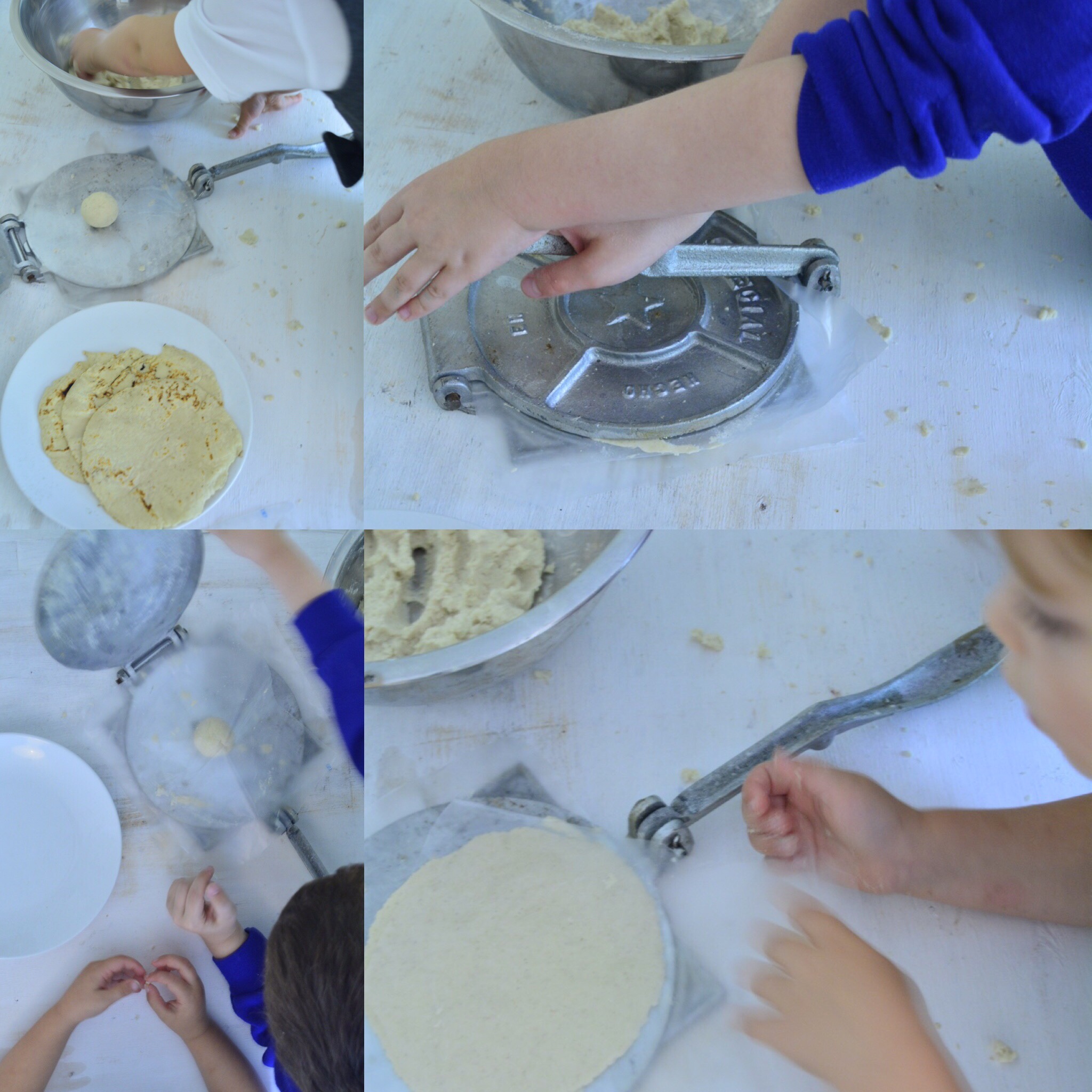




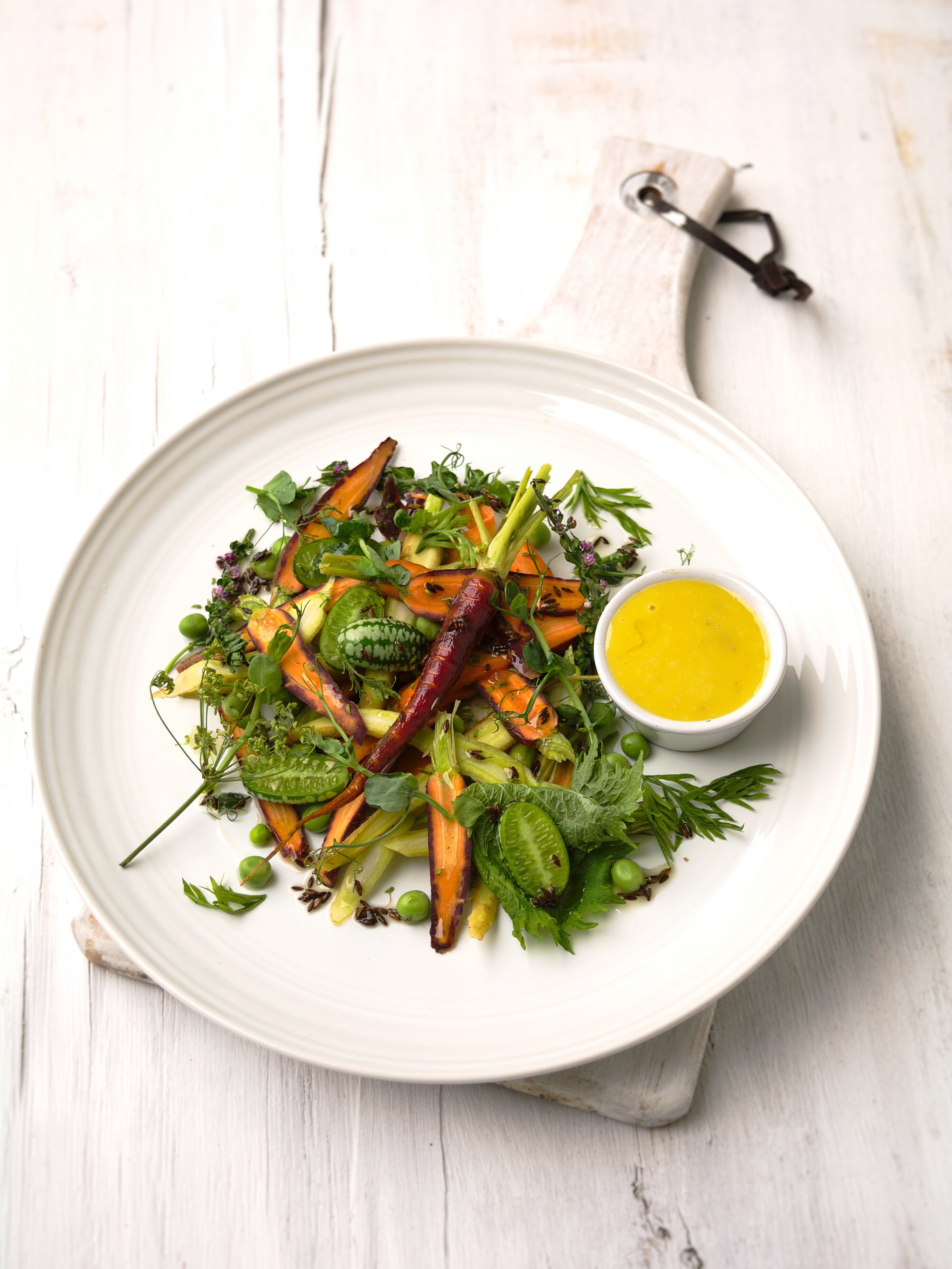 I've been a little less than enthusiastic about cooking the past week. It happens every now and then. Coming up every day with something exciting to eat for supper can be a train that runs out of steam occasionally. Getting back late from shoots and peering into an uninspiring fridge means we've also eaten out and had takeaway more than usual recently.Mostly, I'm up to the challenge and will happily cook a quick prawn curry, a risotto or simple pasta with salad. Last week even that was beyond me. It happens. Perhaps it's the laziness of summer, the thought of holidays and eating lunches by the water's edge, white linen tablecloths and the clinking of ice in glasses. But last night, I roused myself from my torpor and cooked a simple steak with asparagus and baby potatoes with chive butter. There was a delicious tomato salad with balsamic on the side and a bowl of green leaves, lightly dressed with vinaigrette to cut through. It was lovely.But the most delicious part of it was the final potato, crushed into the buttery juices of the steak, mopping up the mustard and melting into my mouth. That alone would have made a great dish.Today, with a little more time I'm making a carrot salad for lunch. I've jazzed it up with some fun ingredients. It's worth every now and then going out of your way to buy strange things such as cucamelons or shiso leaves, it adds a little wow factor. Just buy or grow what you can and have fun, remembering to use good things simply. They often speak for themselves.This salads simplicity, colourfulness and delicacy is just as exciting to look at as it is fresh, delicious and healthy to eat. If you don't like anchovy, leave them out of the mayonnaise, but they are a taste worth acquiring.IngredientsFor the cumin oil:100ml olive oil2tbsp cumin seedsFor the aioli:1 egg1 anchovy, chopped1 small clove of garlic, crushed1tsp Dijon mustardOlive oilFor the salad:A bunch of baby carrots, a mix of purple, yellow and orangeA handful of pea shootsA handful of fresh peasA punnet of cucamelons, halved, if you can get them (I use
I've been a little less than enthusiastic about cooking the past week. It happens every now and then. Coming up every day with something exciting to eat for supper can be a train that runs out of steam occasionally. Getting back late from shoots and peering into an uninspiring fridge means we've also eaten out and had takeaway more than usual recently.Mostly, I'm up to the challenge and will happily cook a quick prawn curry, a risotto or simple pasta with salad. Last week even that was beyond me. It happens. Perhaps it's the laziness of summer, the thought of holidays and eating lunches by the water's edge, white linen tablecloths and the clinking of ice in glasses. But last night, I roused myself from my torpor and cooked a simple steak with asparagus and baby potatoes with chive butter. There was a delicious tomato salad with balsamic on the side and a bowl of green leaves, lightly dressed with vinaigrette to cut through. It was lovely.But the most delicious part of it was the final potato, crushed into the buttery juices of the steak, mopping up the mustard and melting into my mouth. That alone would have made a great dish.Today, with a little more time I'm making a carrot salad for lunch. I've jazzed it up with some fun ingredients. It's worth every now and then going out of your way to buy strange things such as cucamelons or shiso leaves, it adds a little wow factor. Just buy or grow what you can and have fun, remembering to use good things simply. They often speak for themselves.This salads simplicity, colourfulness and delicacy is just as exciting to look at as it is fresh, delicious and healthy to eat. If you don't like anchovy, leave them out of the mayonnaise, but they are a taste worth acquiring.IngredientsFor the cumin oil:100ml olive oil2tbsp cumin seedsFor the aioli:1 egg1 anchovy, chopped1 small clove of garlic, crushed1tsp Dijon mustardOlive oilFor the salad:A bunch of baby carrots, a mix of purple, yellow and orangeA handful of pea shootsA handful of fresh peasA punnet of cucamelons, halved, if you can get them (I use 
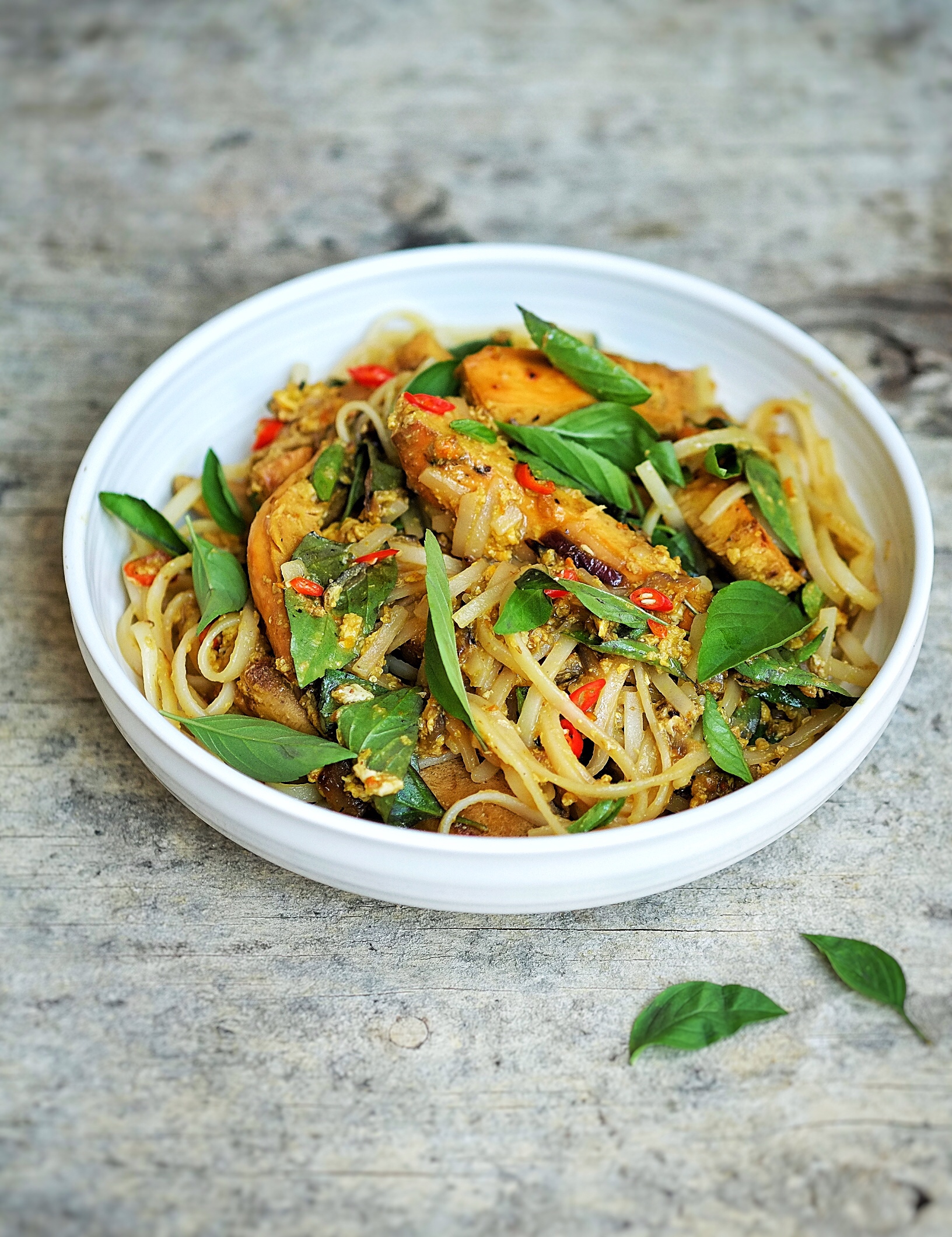 Yes, this is my second mushroom recipe this week, but I had to use them up somehow. And yes, it has noodles in it, but this couldn't be more different to the fettuccine with mushrooms dish if it tried. Although that's not strictly true, it could be soup. Or a croissant.This is a comforting as well as zingy meal. Sometimes we want that carby hit and a bowl of noodles is just the thing. This one seems almost healthy with all the basil.I've used 'chicken of the woods' here. Its texture and meatiness is so like chicken it is perfect with noodles or in stir fries, especially as we all should cut down on our meat eating. Make sure you use it as freshly as possible, it starts to develop a slightly spongy texture if you keep it too long. If you can't get hold of it, use tofu instead, or feel free to use chicken or prawns if you're keen on the meat.Ingredients (for two):Rapeseed oil and chilli oil if you have it2 cloves of garlic, finely sliced2tbsp soy sauce1tbsp fish sauce80ml water2 red chillies, sliced plus more to finish if you like it hotter1 thumb of galangal, grated (or ginger if you don't have any)200g chicken of the woods, thickly sliced1/2 red onion, sliced2 eggs, beaten1 small turmeric root, grated100g 'sen leek' noodles (folded rice noodles) - cookedA large handful of holy basil leaves per personMethod:Mix the soy, fish sauce and turmeric in a bowl.Heat some oil in a wok and gently fry the galangal, garlic and onion. Turn the heat up and add the mushrooms. Season with a little salt and add some chilli oil. Fry until golden in parts and softened. Turn the heat back down.Add the egg to the pan and scramble gently. Pour in the soy mix, chillies and noodles stir and add the water. Turn up the heat and heat through. Mix through loads of the Thai basil, add a drizzle of chilli oil and more chillies if you like it hot, which I do.
Yes, this is my second mushroom recipe this week, but I had to use them up somehow. And yes, it has noodles in it, but this couldn't be more different to the fettuccine with mushrooms dish if it tried. Although that's not strictly true, it could be soup. Or a croissant.This is a comforting as well as zingy meal. Sometimes we want that carby hit and a bowl of noodles is just the thing. This one seems almost healthy with all the basil.I've used 'chicken of the woods' here. Its texture and meatiness is so like chicken it is perfect with noodles or in stir fries, especially as we all should cut down on our meat eating. Make sure you use it as freshly as possible, it starts to develop a slightly spongy texture if you keep it too long. If you can't get hold of it, use tofu instead, or feel free to use chicken or prawns if you're keen on the meat.Ingredients (for two):Rapeseed oil and chilli oil if you have it2 cloves of garlic, finely sliced2tbsp soy sauce1tbsp fish sauce80ml water2 red chillies, sliced plus more to finish if you like it hotter1 thumb of galangal, grated (or ginger if you don't have any)200g chicken of the woods, thickly sliced1/2 red onion, sliced2 eggs, beaten1 small turmeric root, grated100g 'sen leek' noodles (folded rice noodles) - cookedA large handful of holy basil leaves per personMethod:Mix the soy, fish sauce and turmeric in a bowl.Heat some oil in a wok and gently fry the galangal, garlic and onion. Turn the heat up and add the mushrooms. Season with a little salt and add some chilli oil. Fry until golden in parts and softened. Turn the heat back down.Add the egg to the pan and scramble gently. Pour in the soy mix, chillies and noodles stir and add the water. Turn up the heat and heat through. Mix through loads of the Thai basil, add a drizzle of chilli oil and more chillies if you like it hot, which I do.
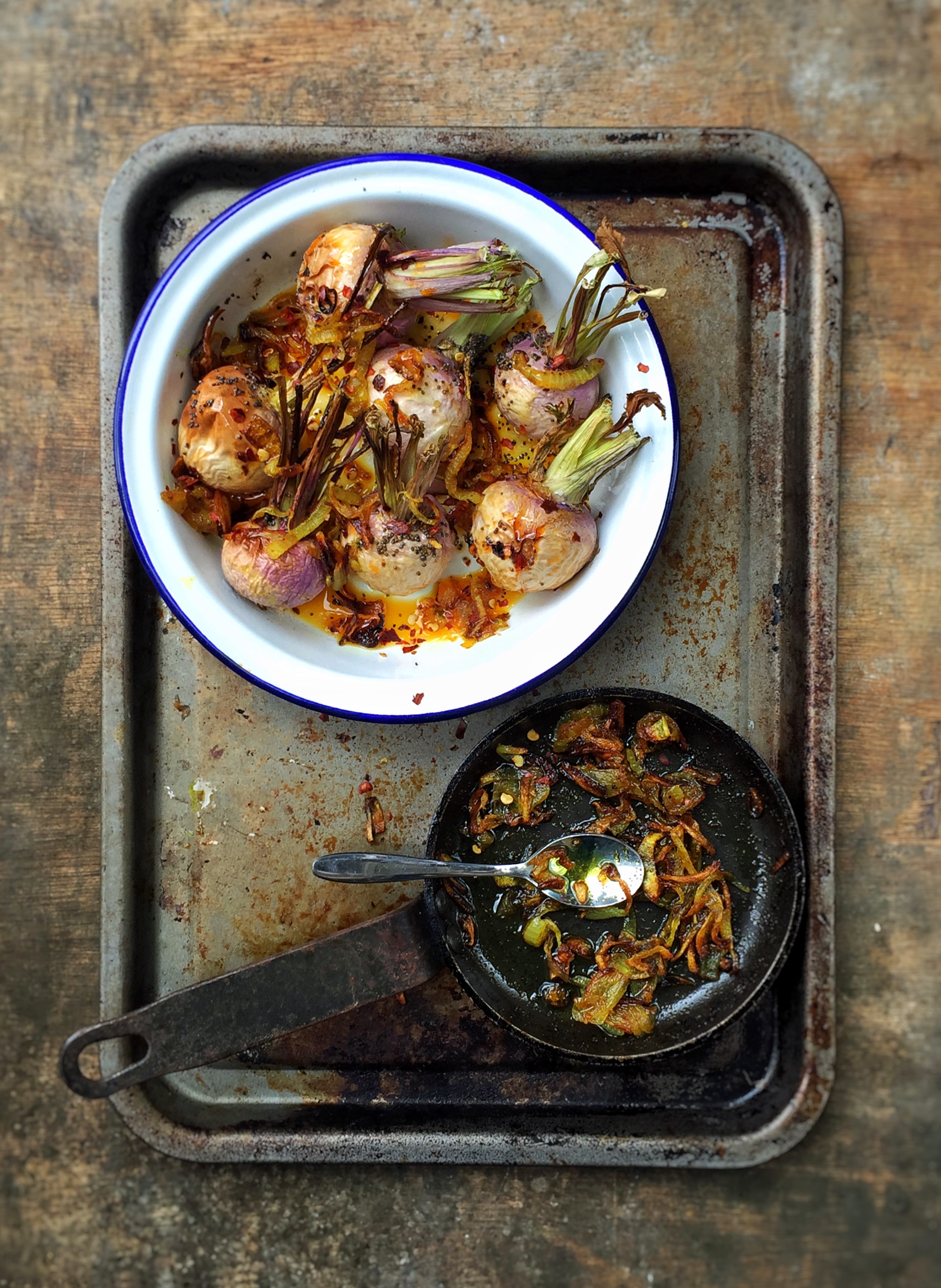 I had a couple of packets of baby turnips in the fridge. I always struggle with them, as in, what is their point? I've always thought of them as a bulbous, soft crunch of flavourlesness. A little like eating a toasted tennis ball.To give them a chance, I threw some of my favourite flavours at them, knowing that whatever I did would be an improvement. It's hard to improve upon slowly caramelised onions, and the thought of draping them over the turnips once they had been roasted in some chilli oil was enough to get the oven on first thing this morning.Three quarters of an hour later and I had a delicious mid-morning snack with enough chilli punch in it to finally get the day going after having survived my children's joint birthday party with no fatalities and I think all children safely returned. We may yet find one or two in the bushes.So turnips are safe, for now. This would make a splendid accompaniment to spatchcocked, grilled tandoori-spiced chicken or roast coriander and cumin slow-roast lamb shoulder. Now there's an idea for next weekend.Ingredients:A few packs of baby turnips2tbsp chilli oil1tbsp chilli flakes1/2 white onion1/2tsp ground coriander1/2tsp ground cumin1/2tsp ground turmeric1tsp ghee or vegetable oilSalt and pepper to seasonMethod:Heat the oven to 180c and roast the turnips, drizzled with the chilli oil for about 45 minutes.While they are cooking, finely slice the onion and slowly sauté in the ghee with the spices and a little seasoning. Cook slowly until they are golden and starting to ever so slightly caramelise.Spoon over the turnips, drizzle with a little more chilli oil and scatter with chilli flakes.Serve immediately, being careful to not burn your tongue on the onions like I did.
I had a couple of packets of baby turnips in the fridge. I always struggle with them, as in, what is their point? I've always thought of them as a bulbous, soft crunch of flavourlesness. A little like eating a toasted tennis ball.To give them a chance, I threw some of my favourite flavours at them, knowing that whatever I did would be an improvement. It's hard to improve upon slowly caramelised onions, and the thought of draping them over the turnips once they had been roasted in some chilli oil was enough to get the oven on first thing this morning.Three quarters of an hour later and I had a delicious mid-morning snack with enough chilli punch in it to finally get the day going after having survived my children's joint birthday party with no fatalities and I think all children safely returned. We may yet find one or two in the bushes.So turnips are safe, for now. This would make a splendid accompaniment to spatchcocked, grilled tandoori-spiced chicken or roast coriander and cumin slow-roast lamb shoulder. Now there's an idea for next weekend.Ingredients:A few packs of baby turnips2tbsp chilli oil1tbsp chilli flakes1/2 white onion1/2tsp ground coriander1/2tsp ground cumin1/2tsp ground turmeric1tsp ghee or vegetable oilSalt and pepper to seasonMethod:Heat the oven to 180c and roast the turnips, drizzled with the chilli oil for about 45 minutes.While they are cooking, finely slice the onion and slowly sauté in the ghee with the spices and a little seasoning. Cook slowly until they are golden and starting to ever so slightly caramelise.Spoon over the turnips, drizzle with a little more chilli oil and scatter with chilli flakes.Serve immediately, being careful to not burn your tongue on the onions like I did.